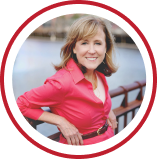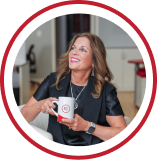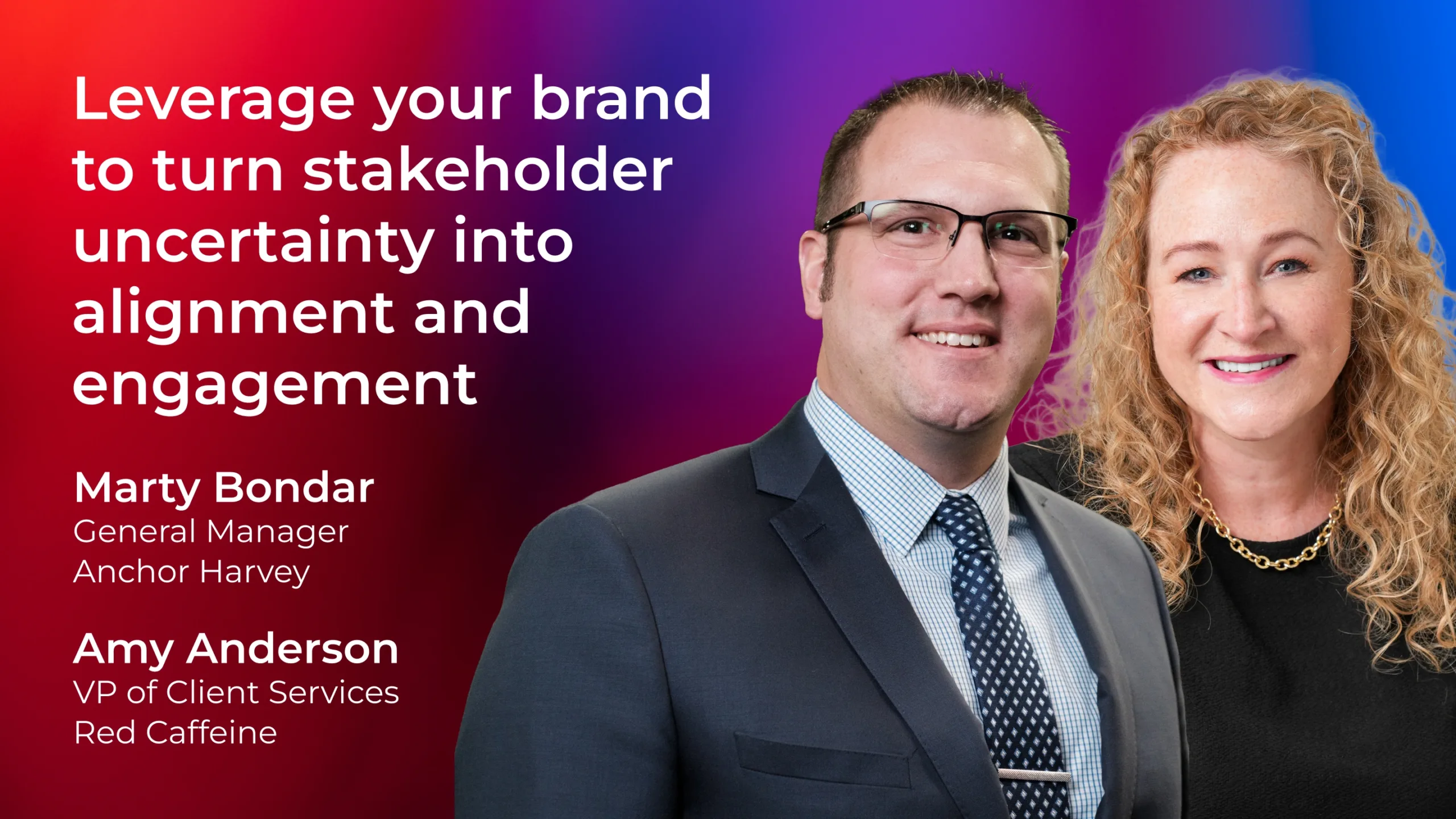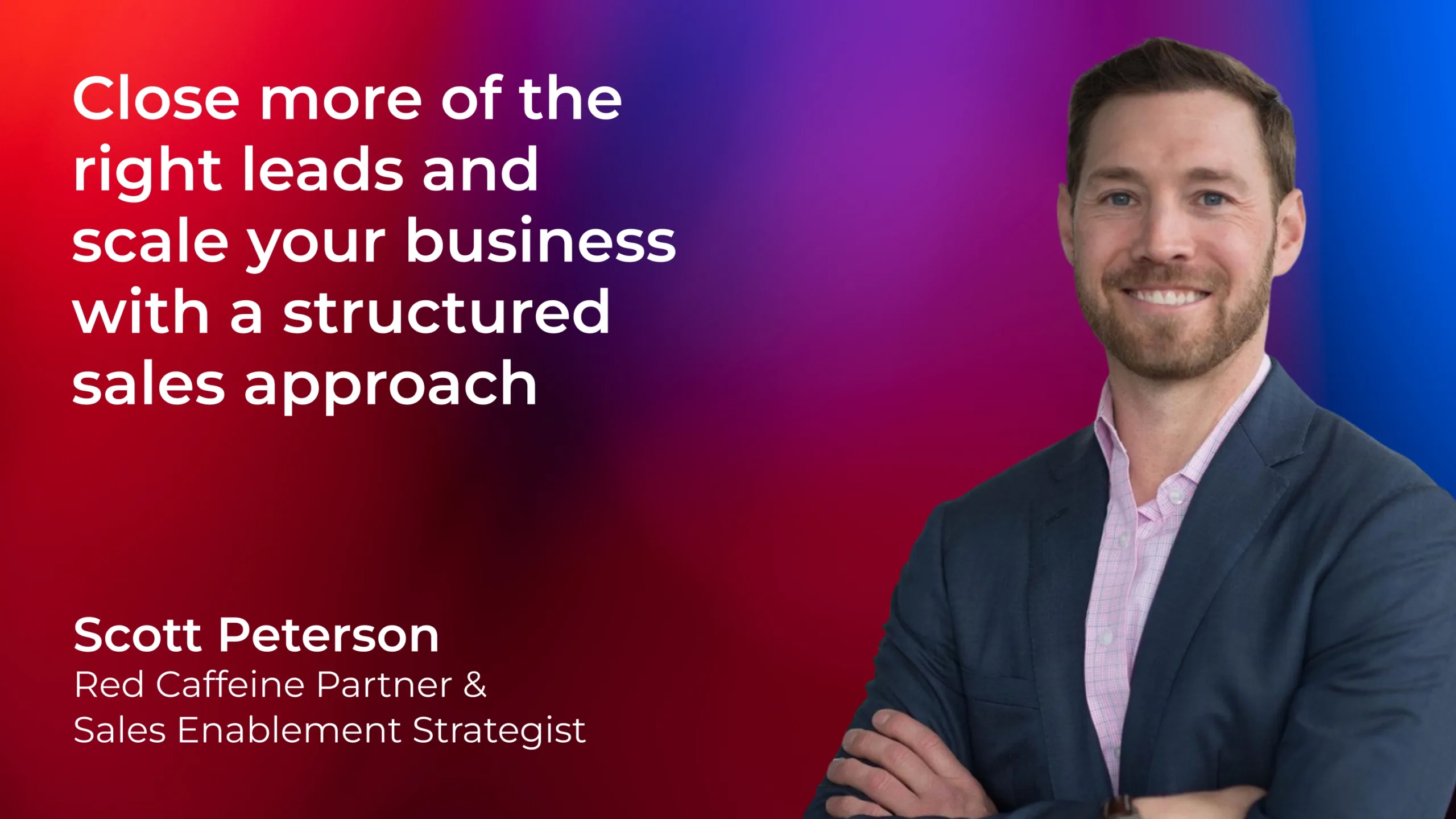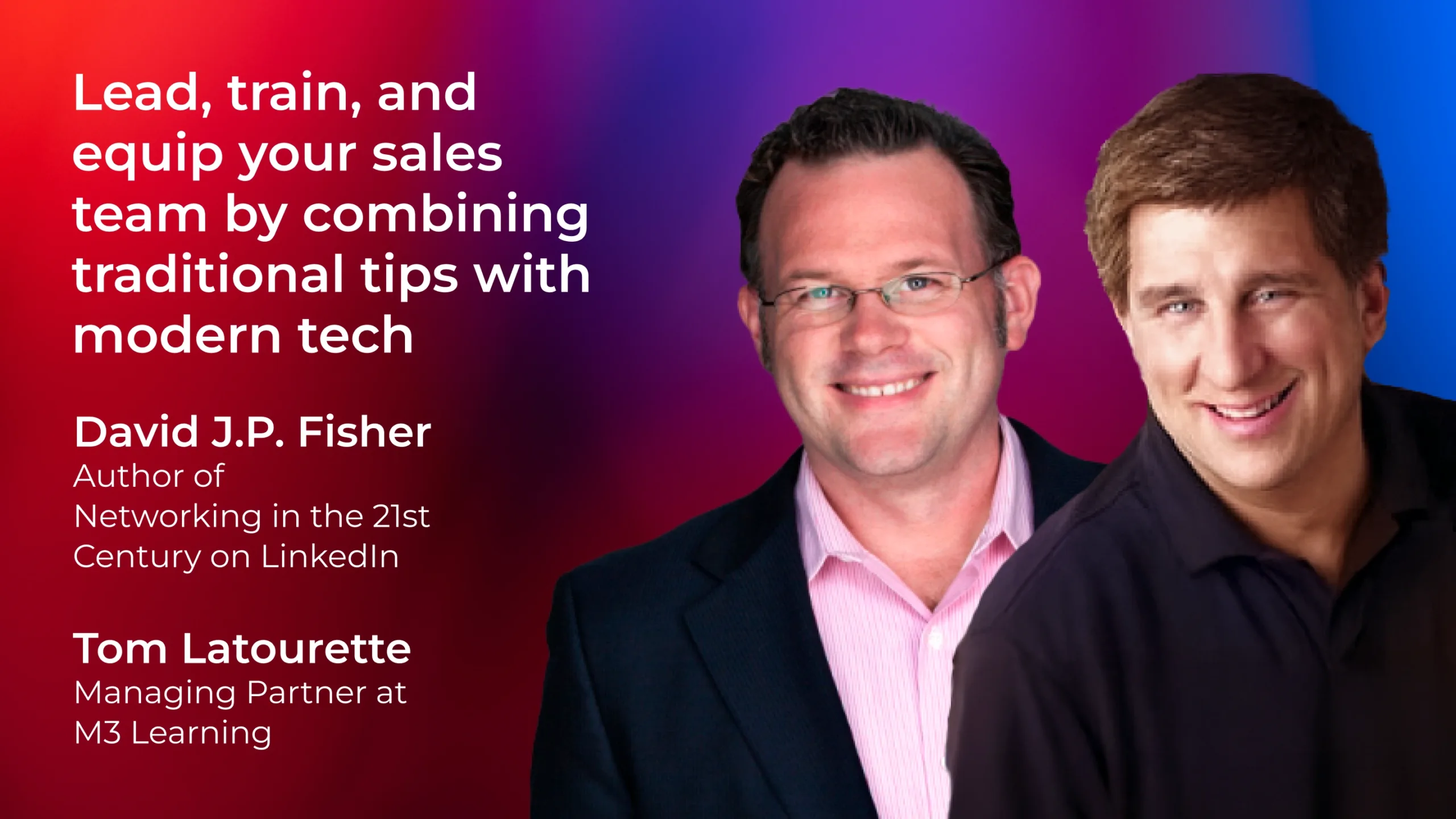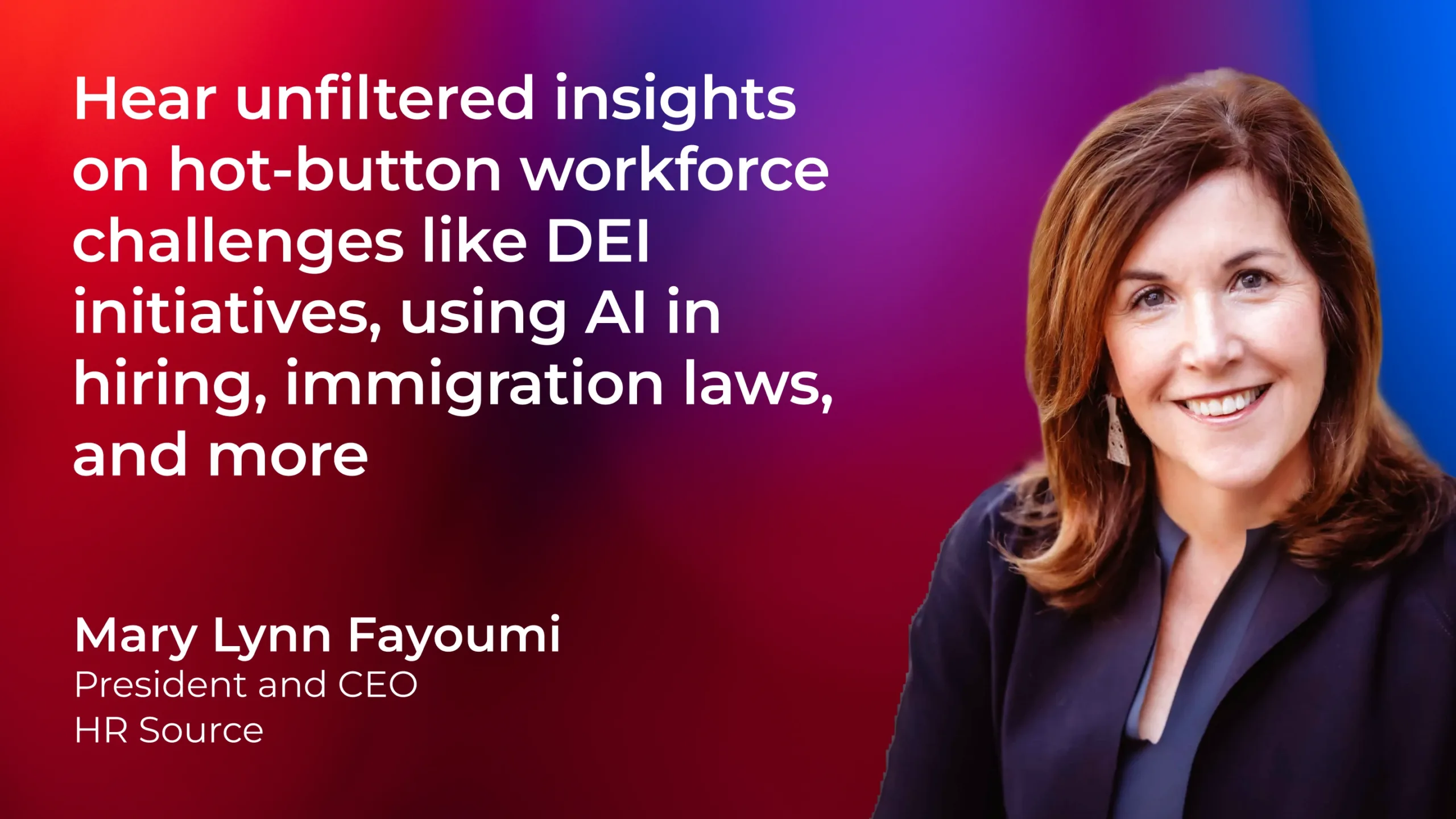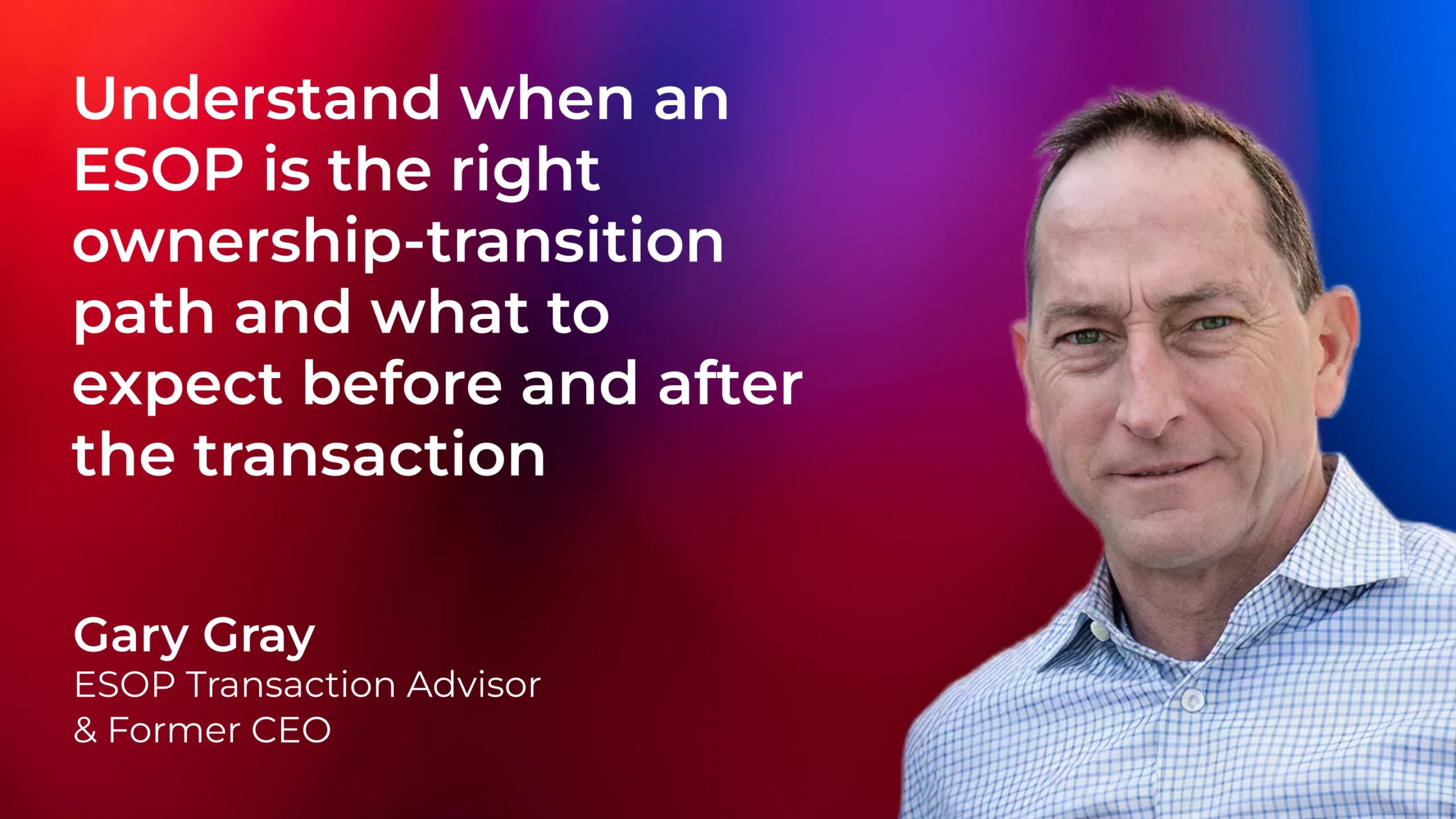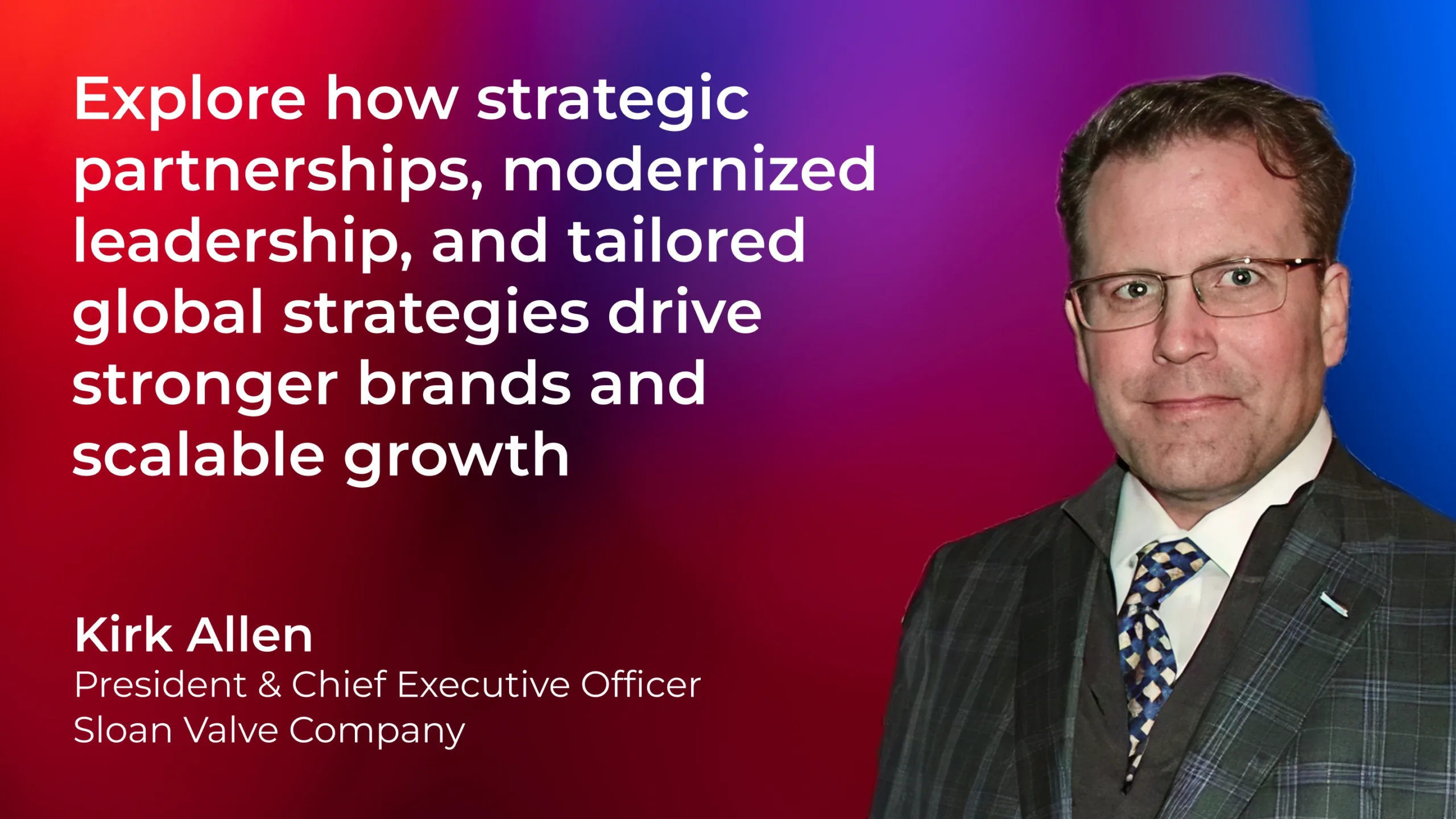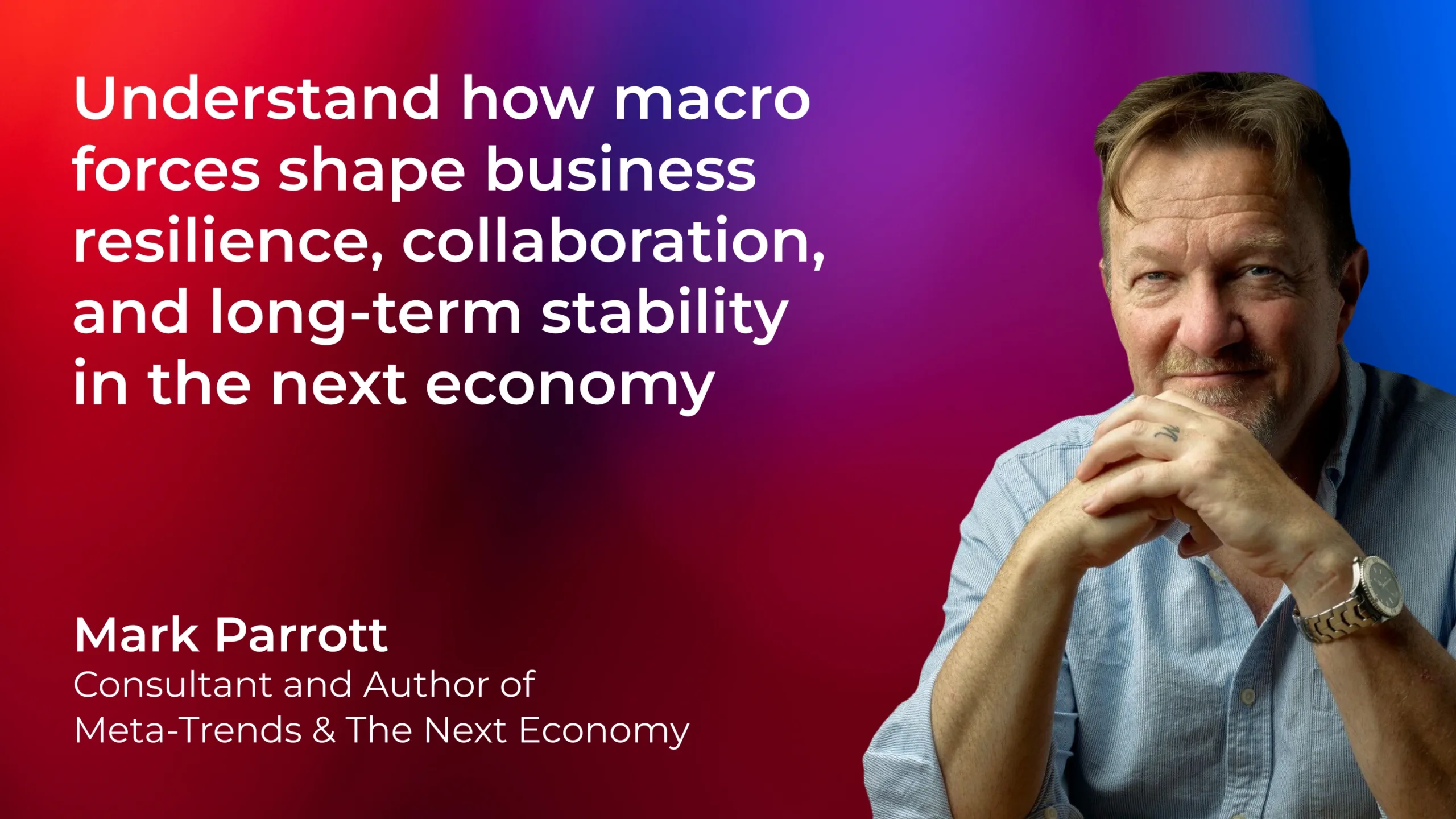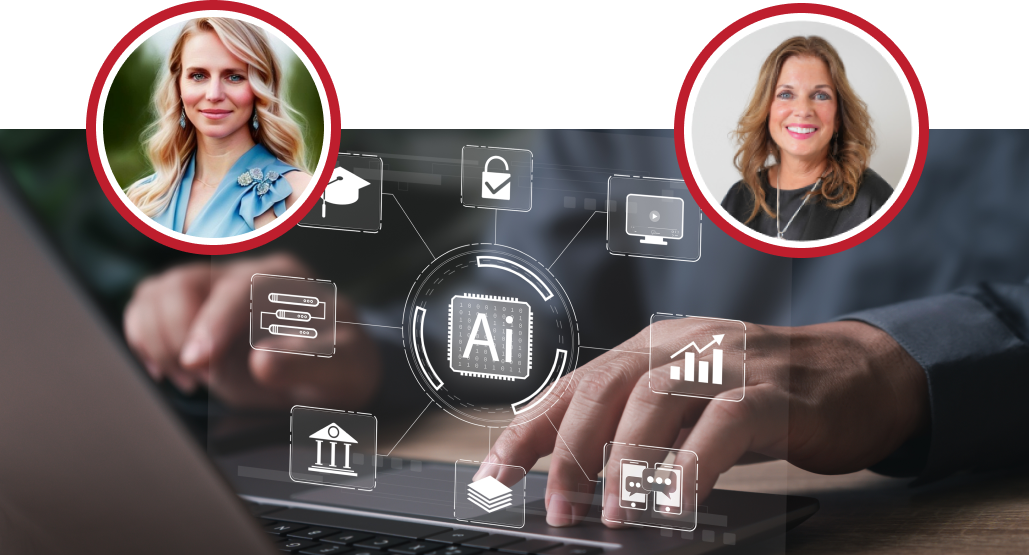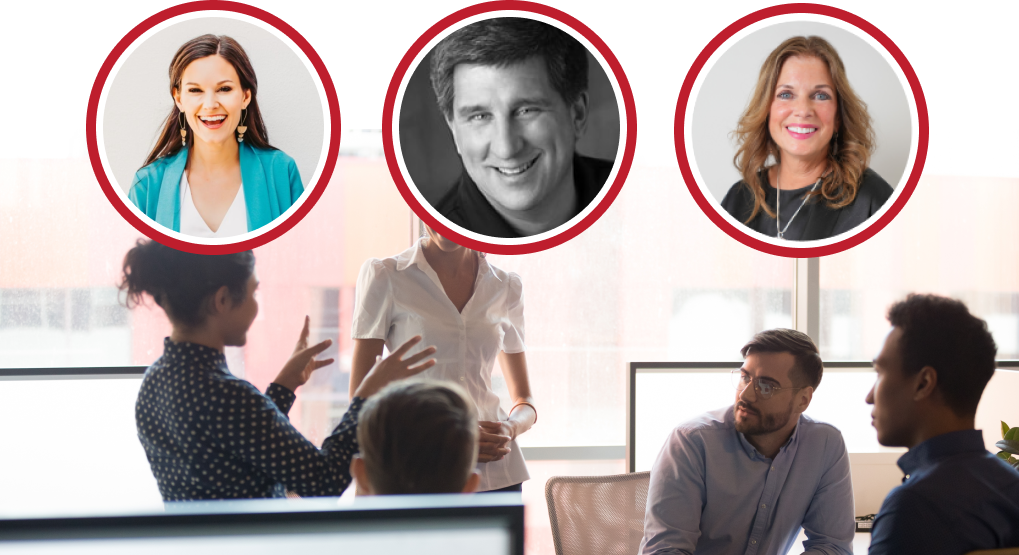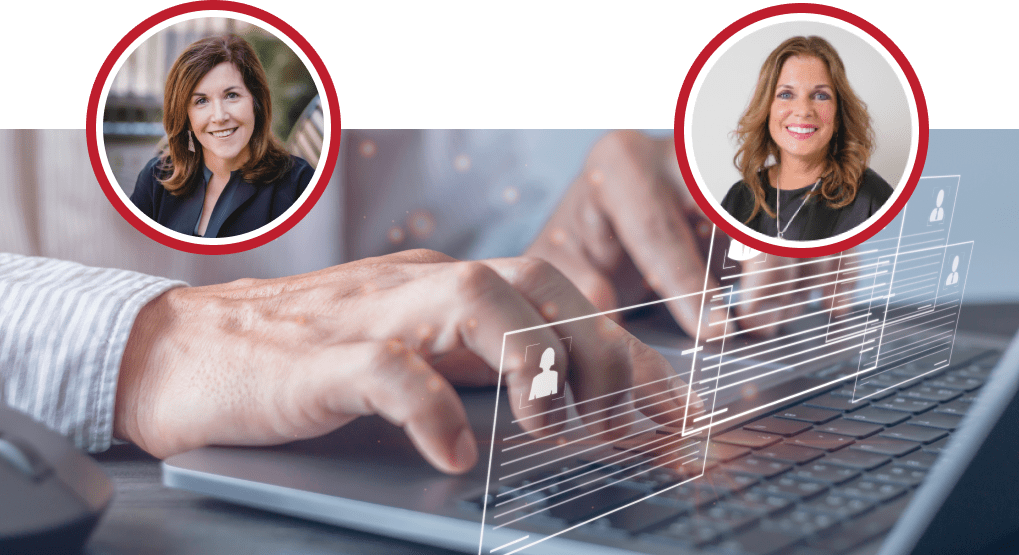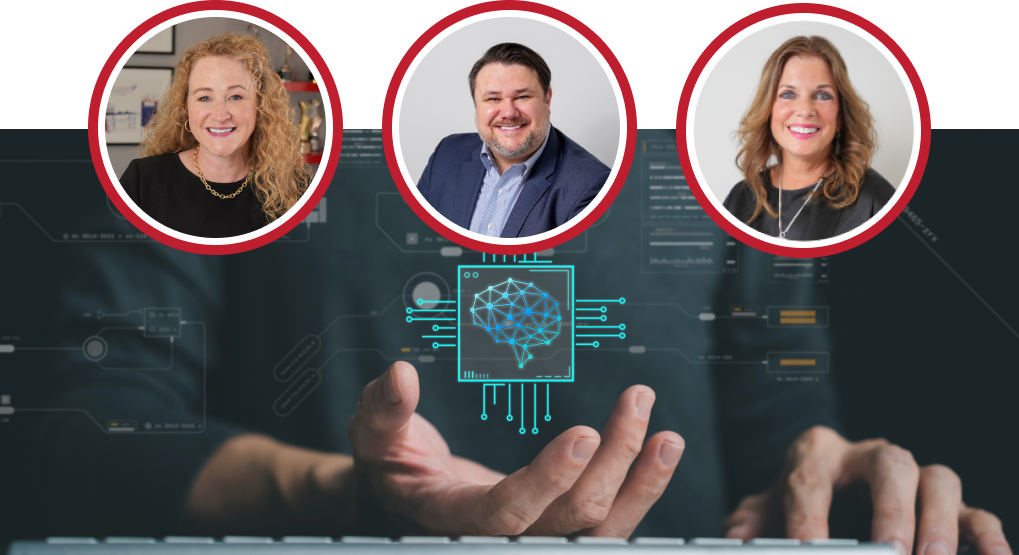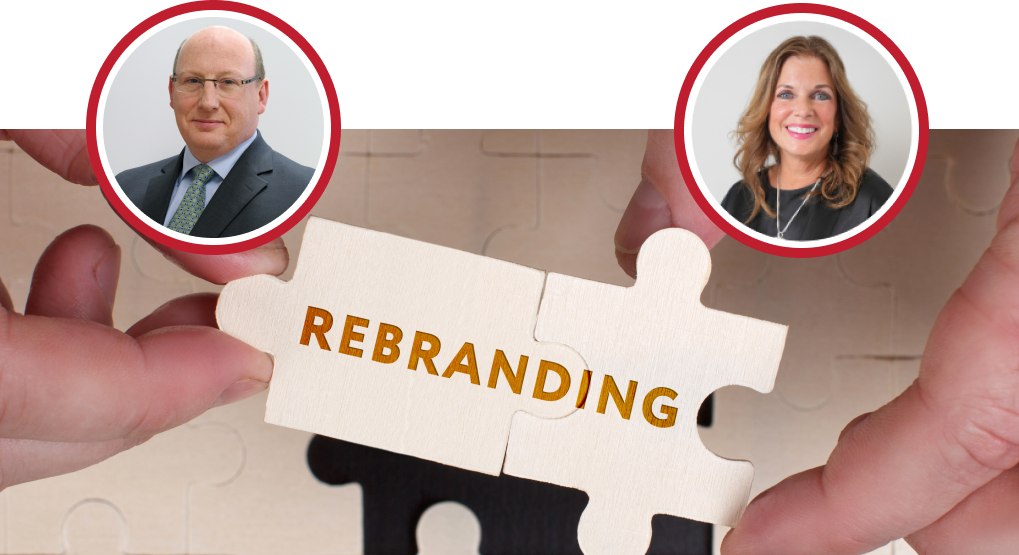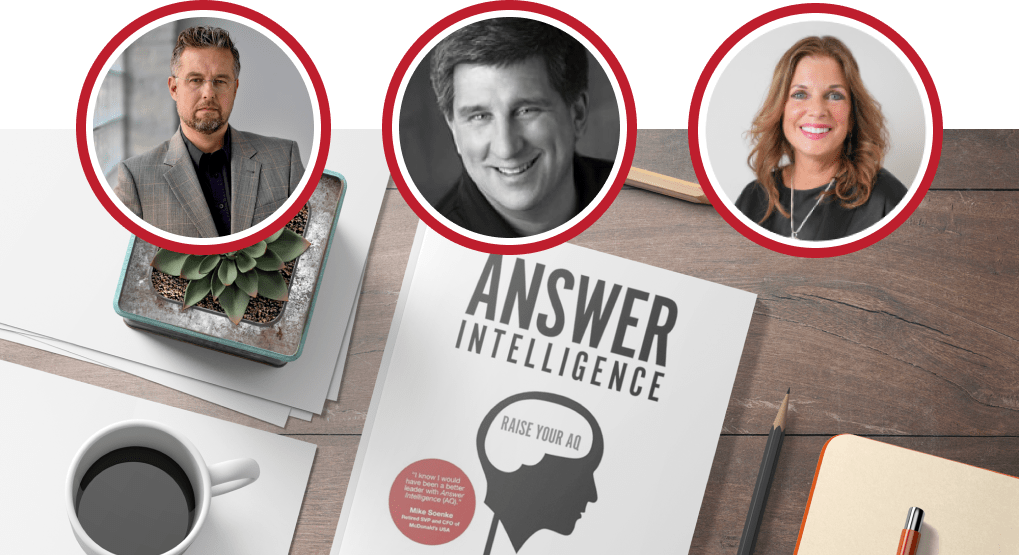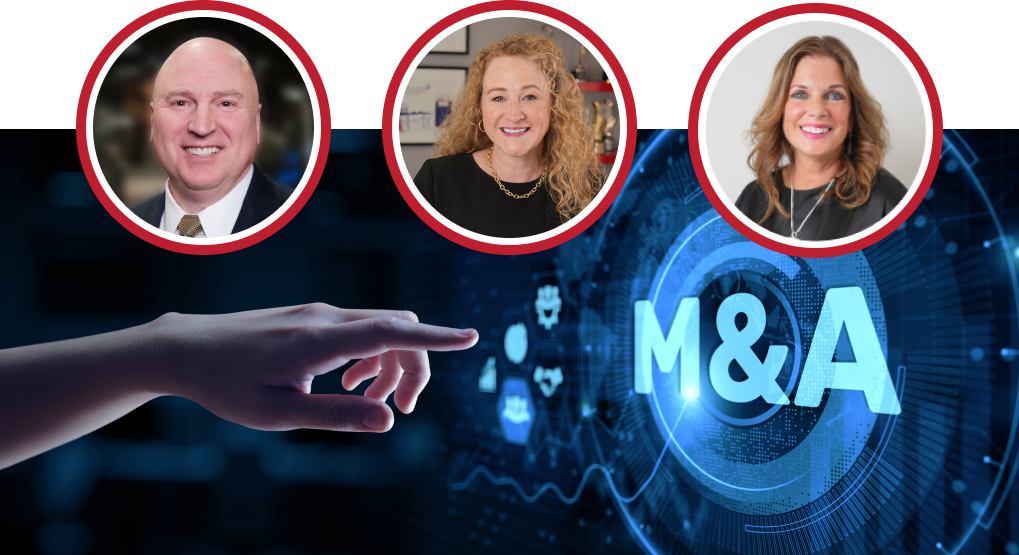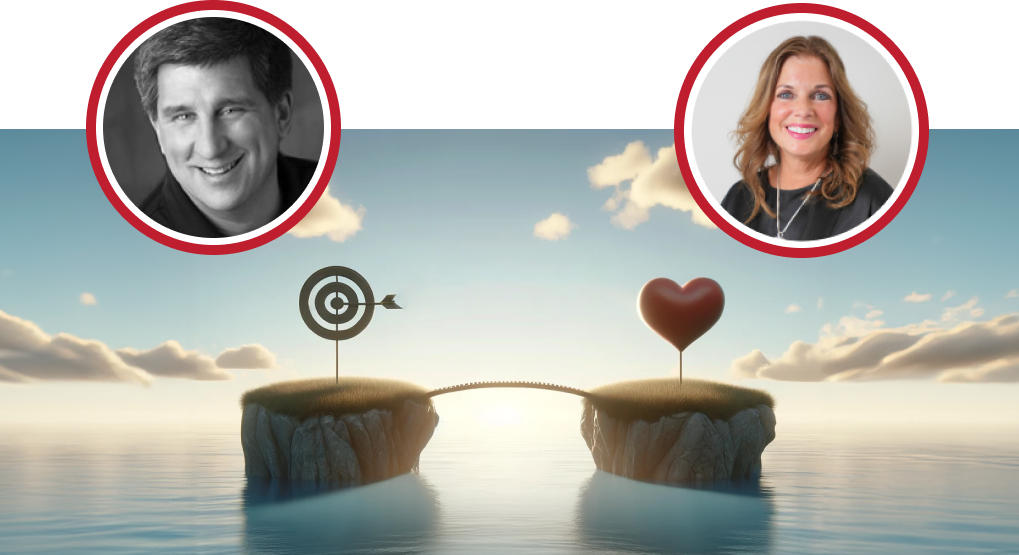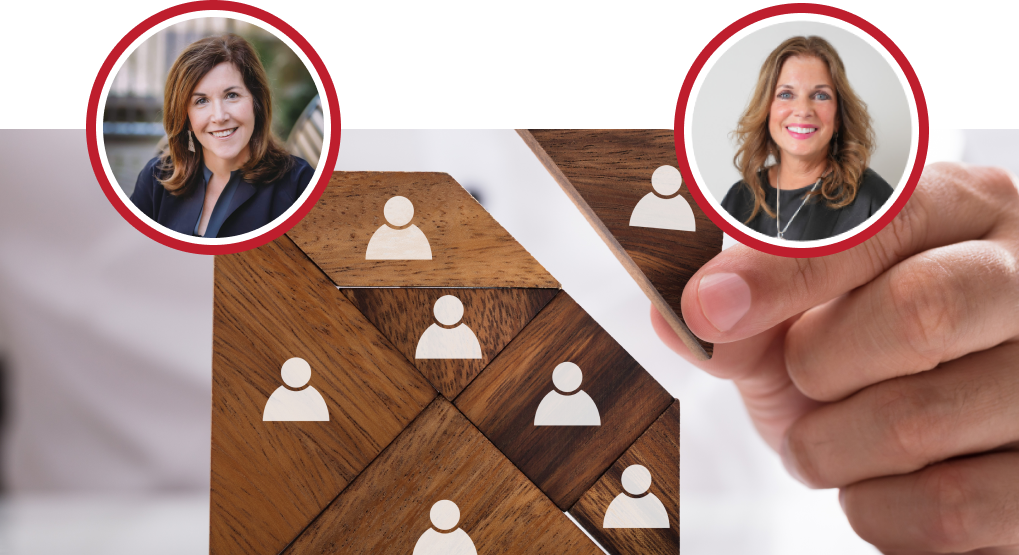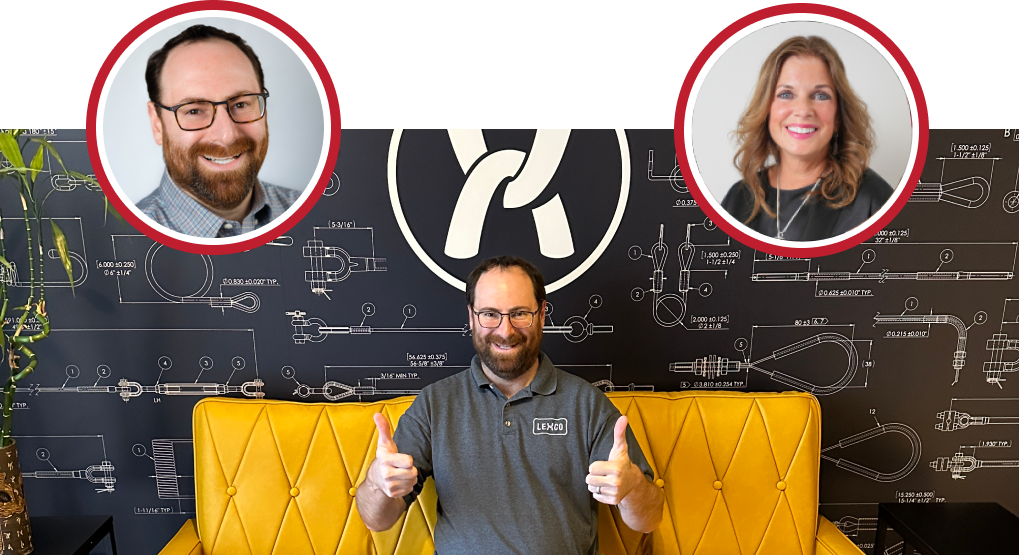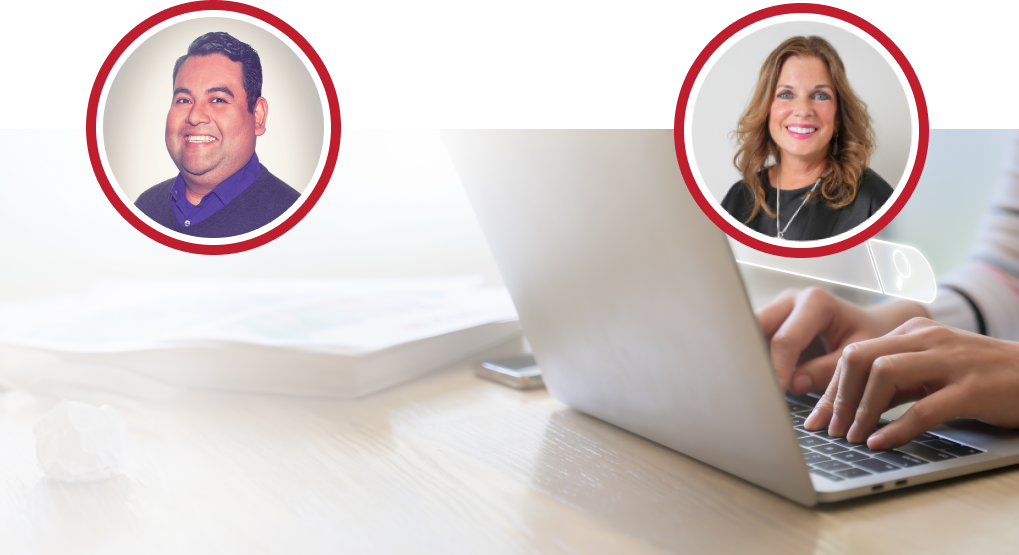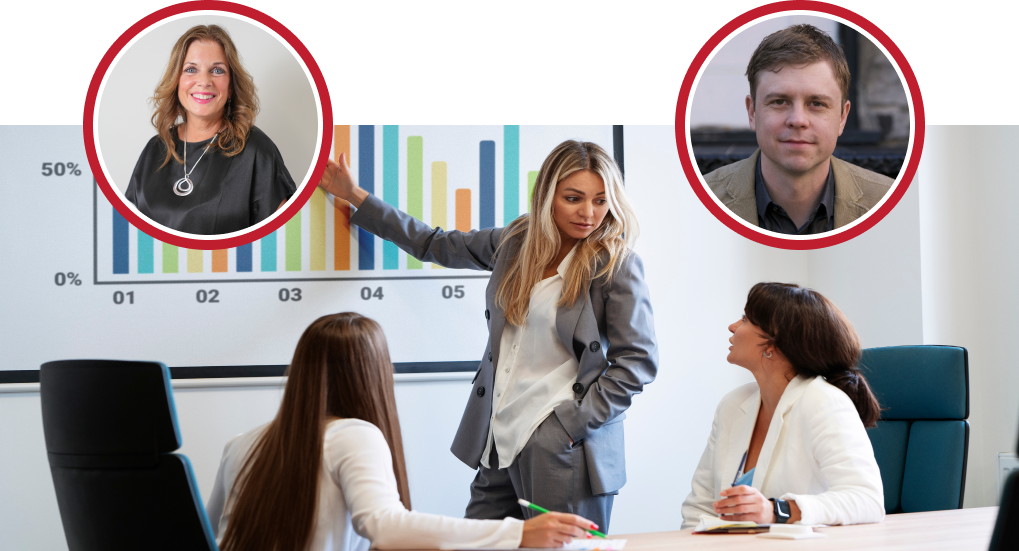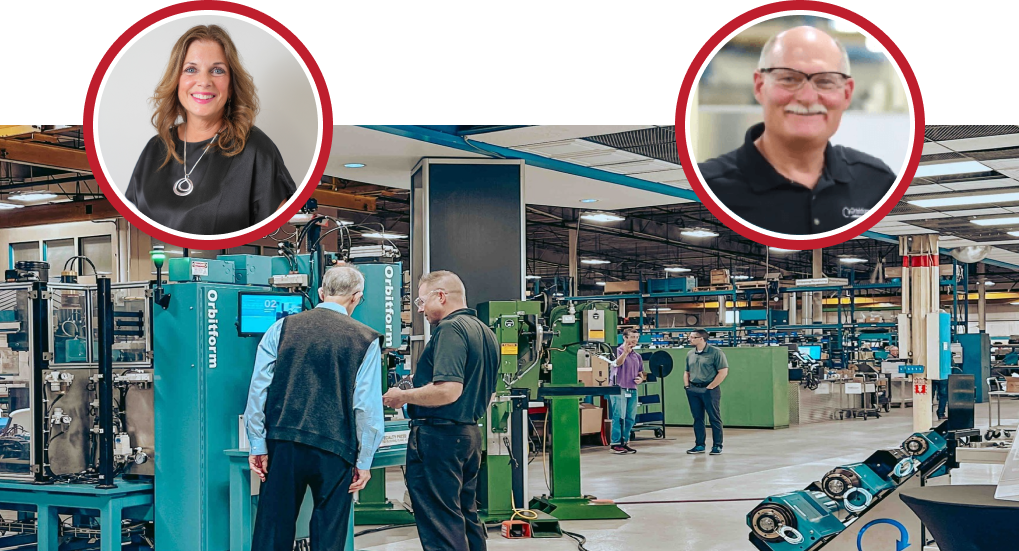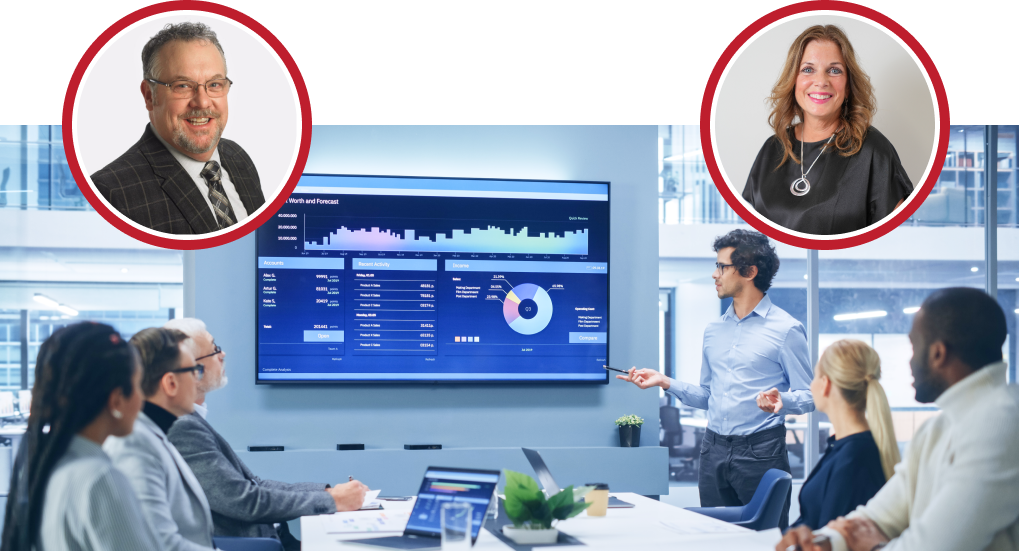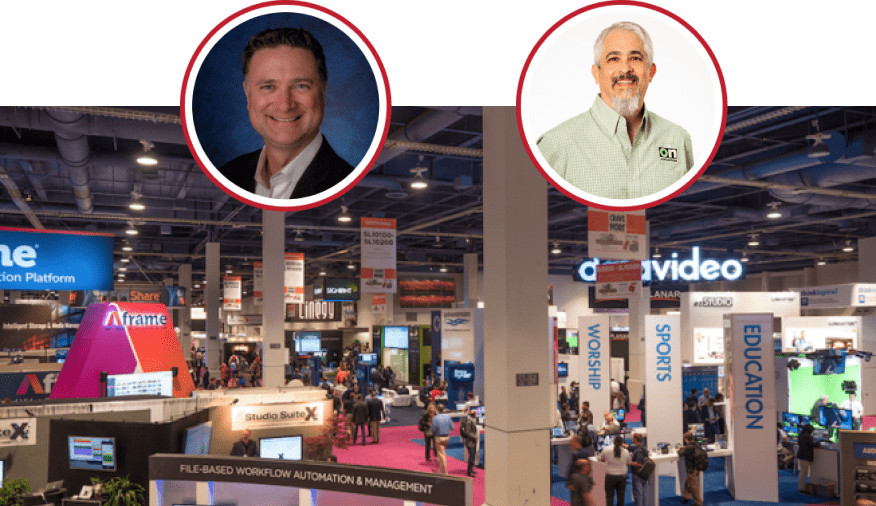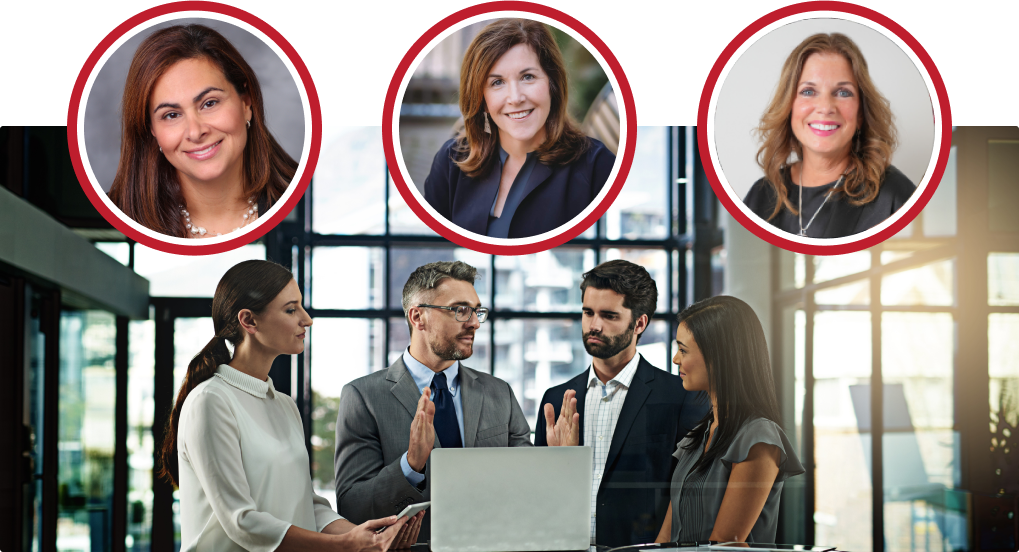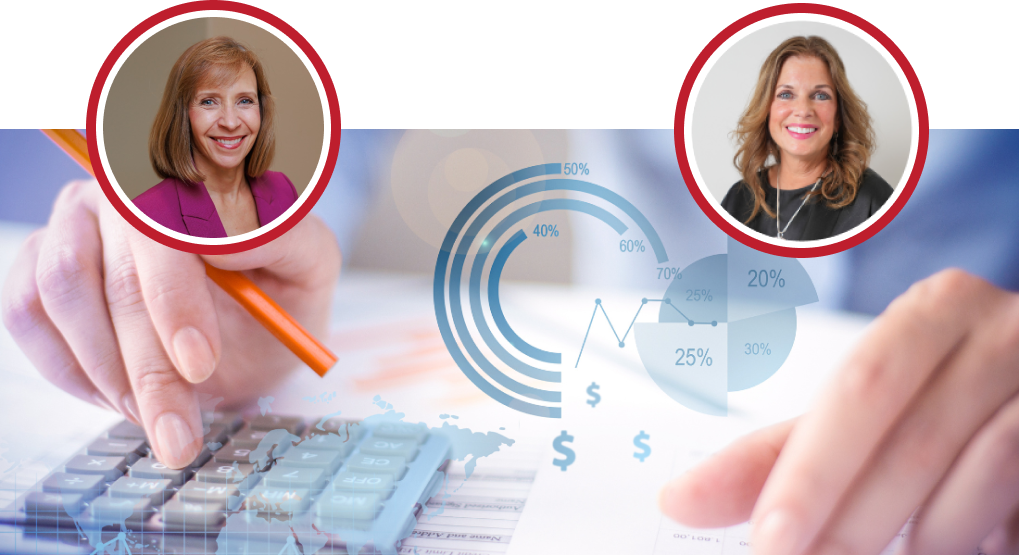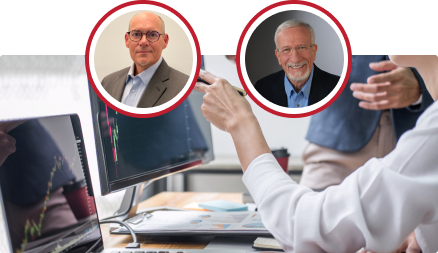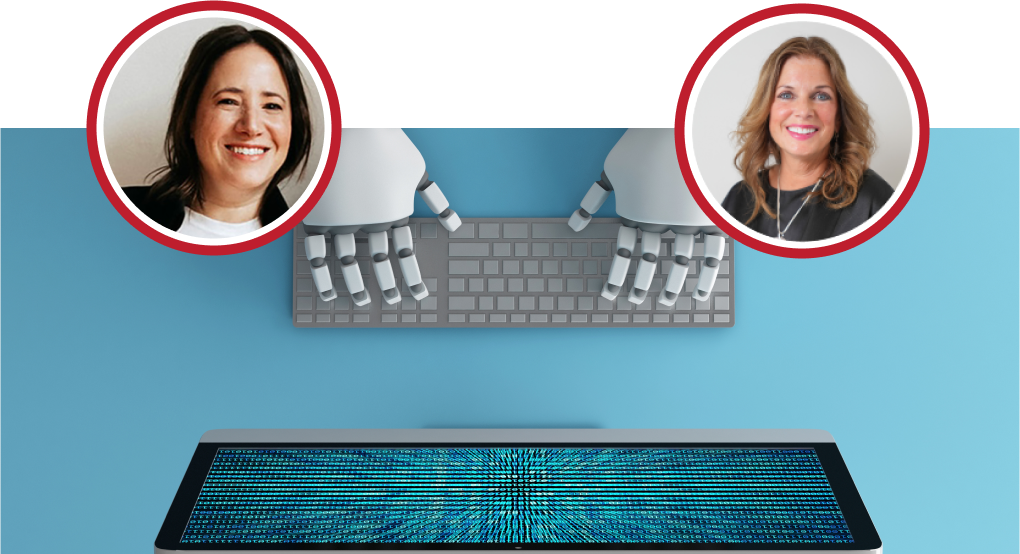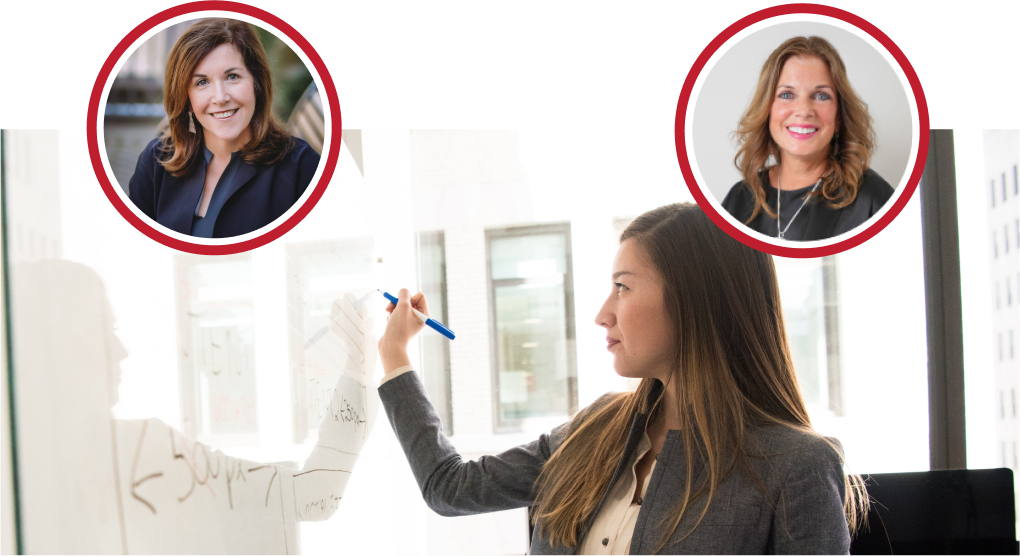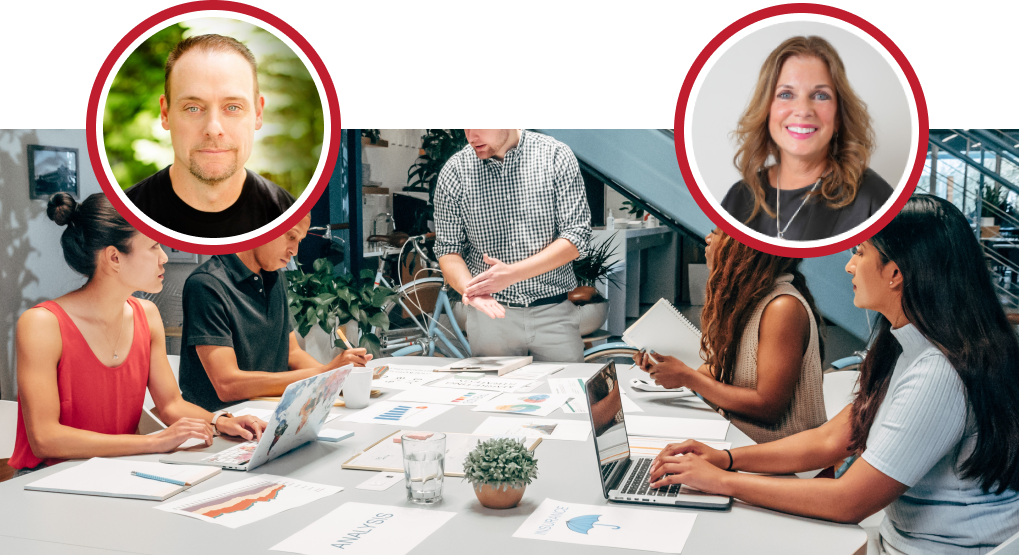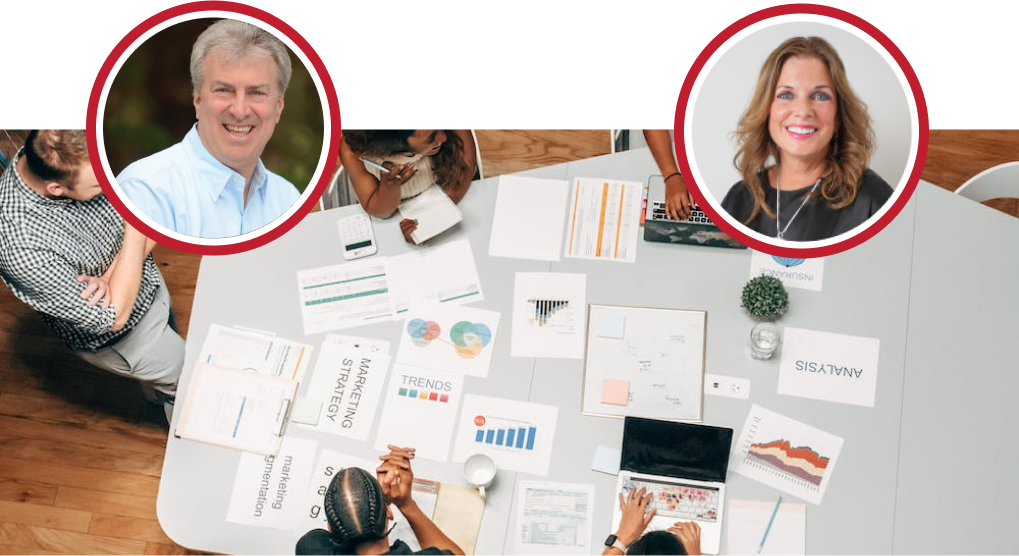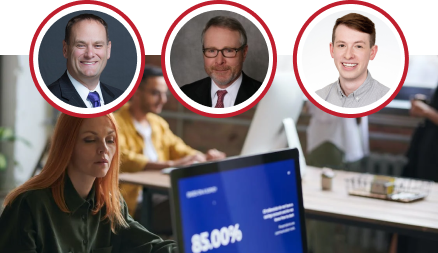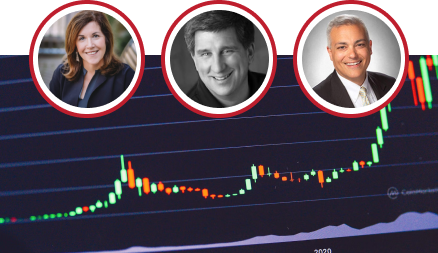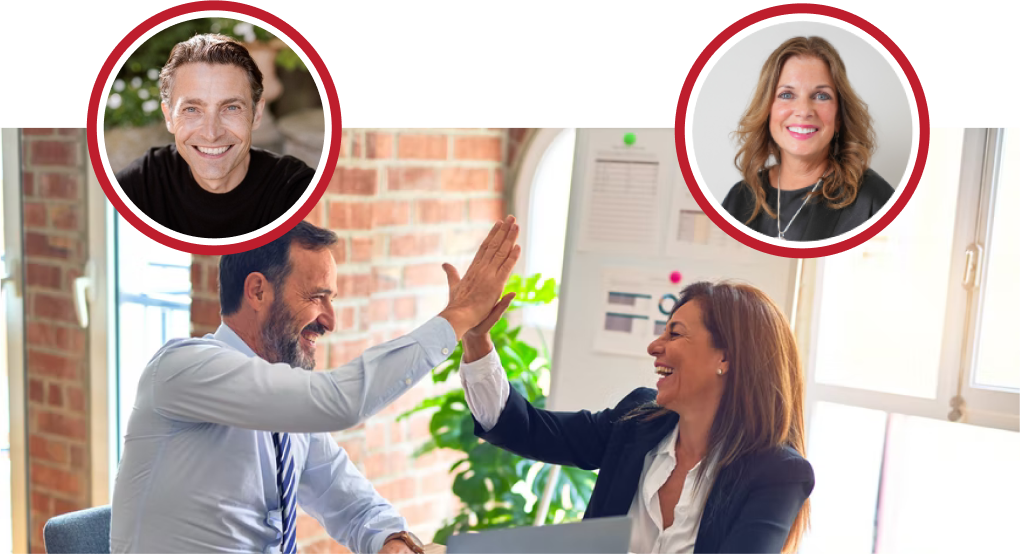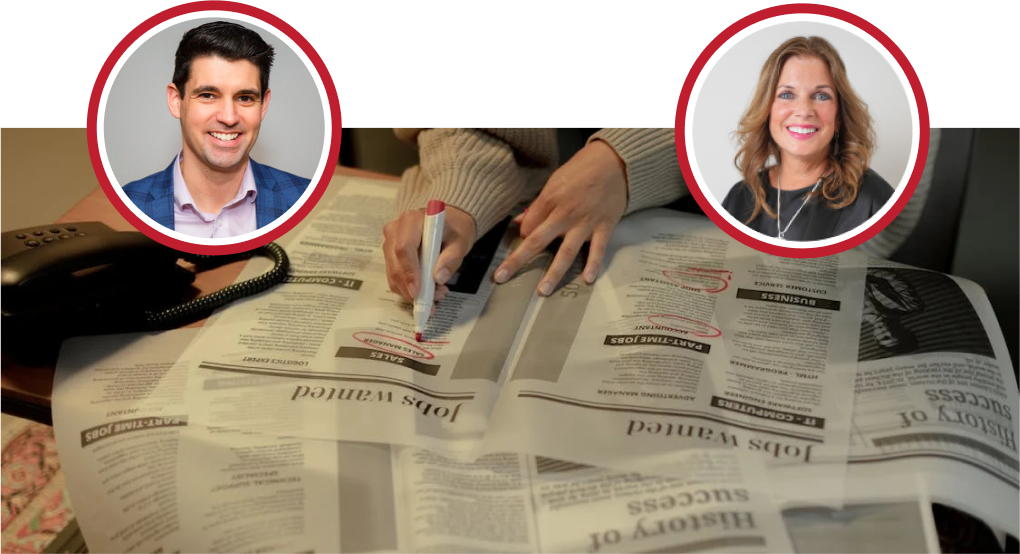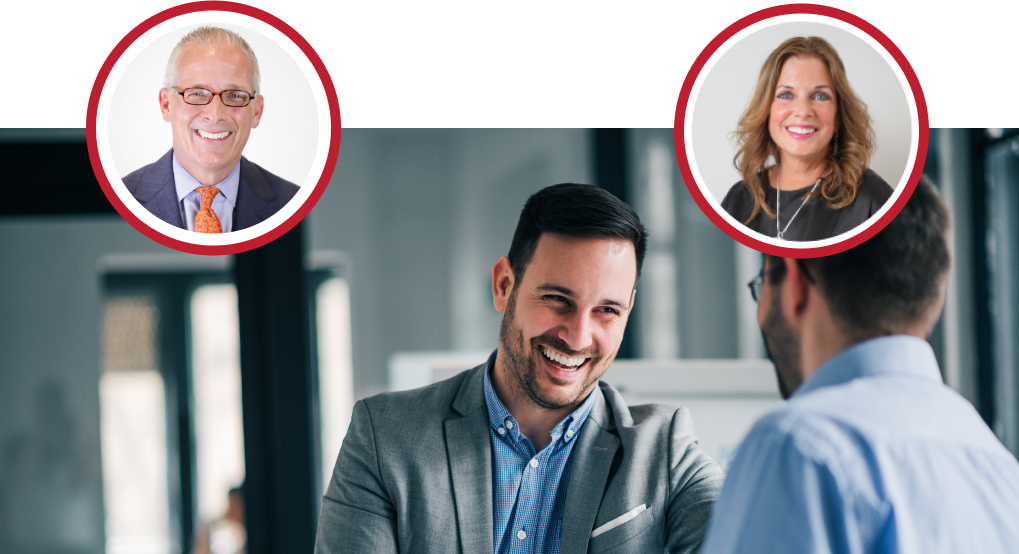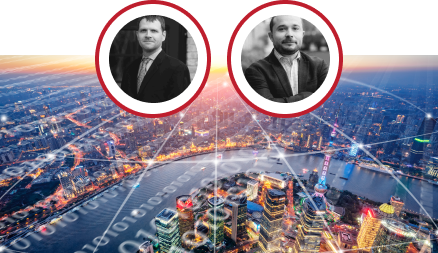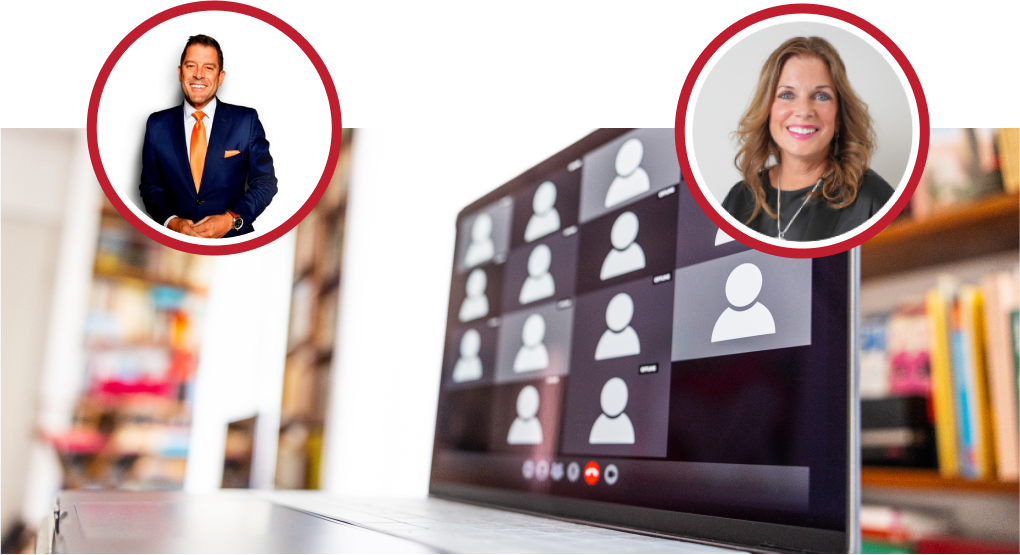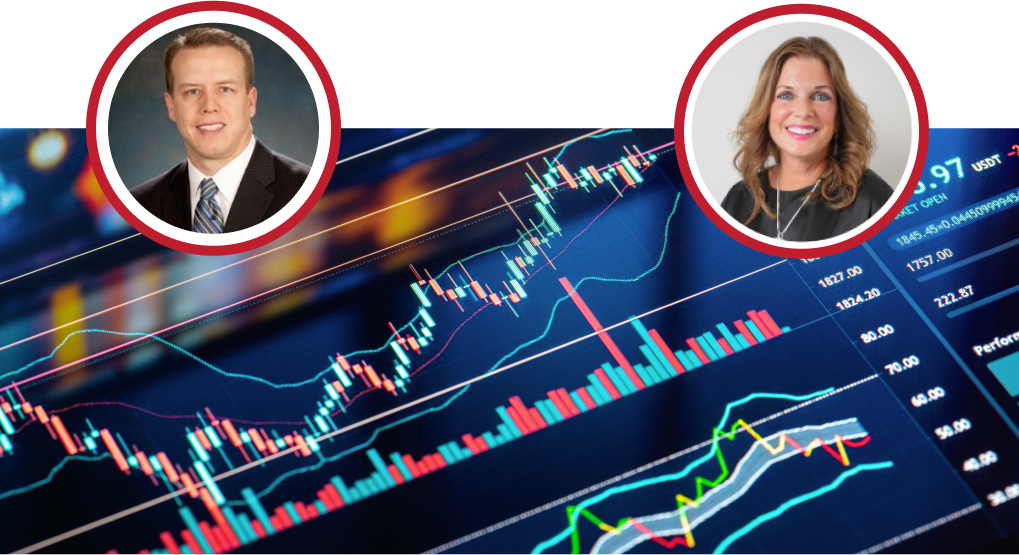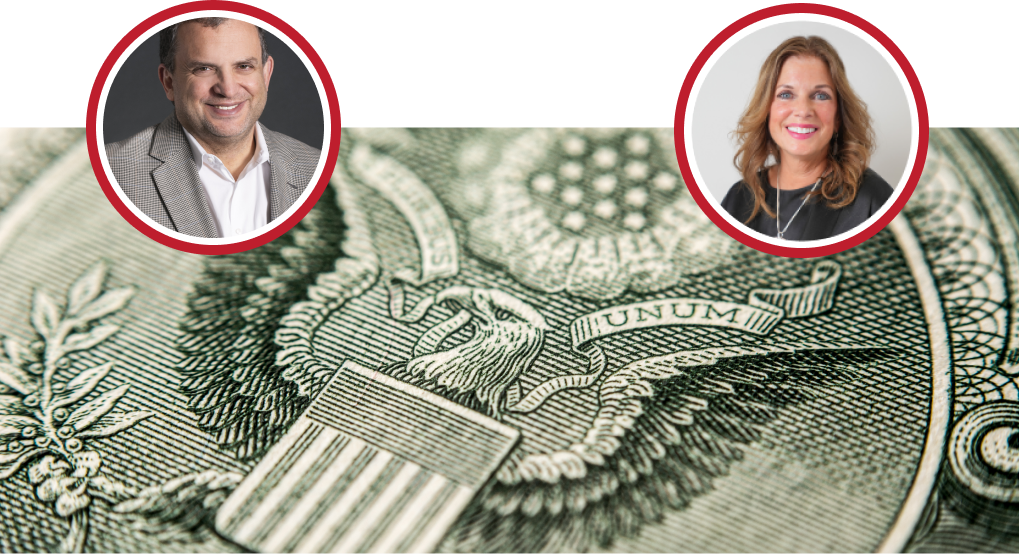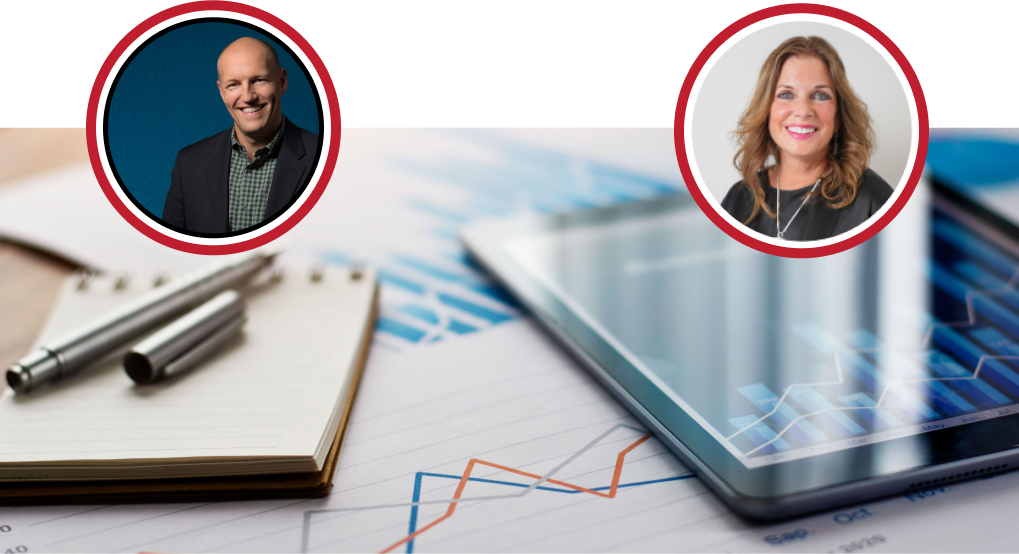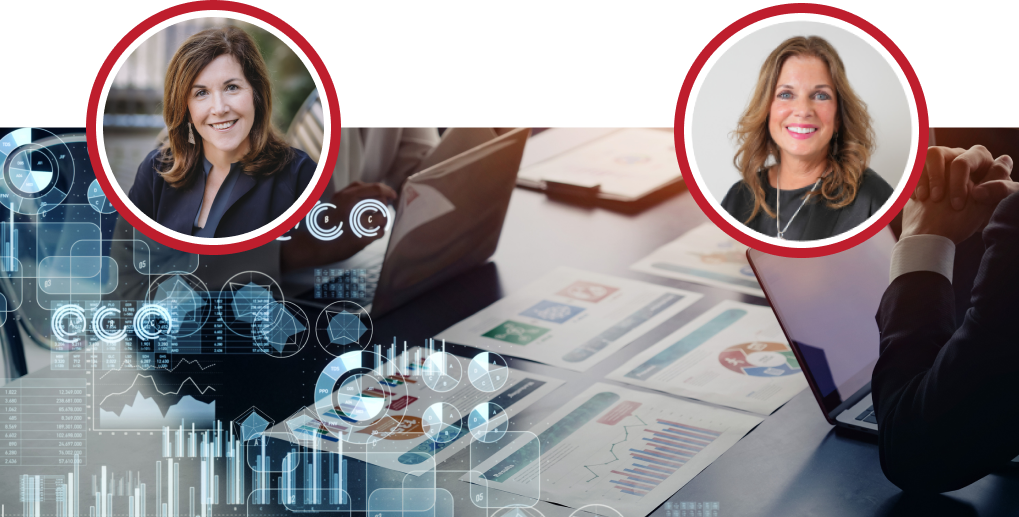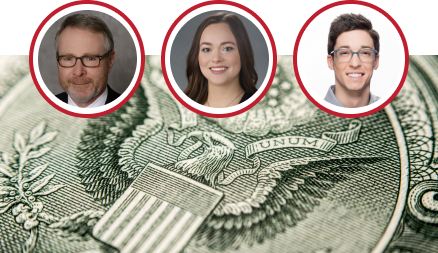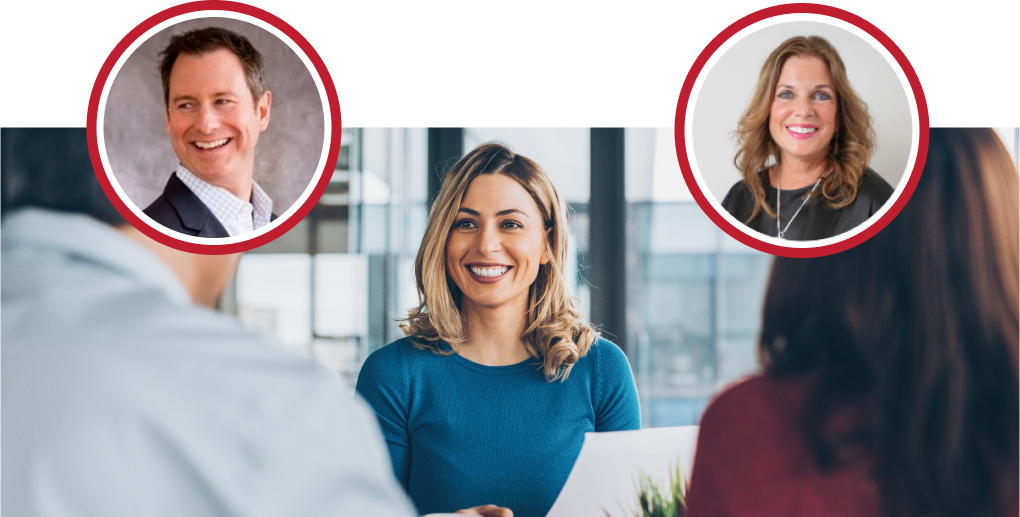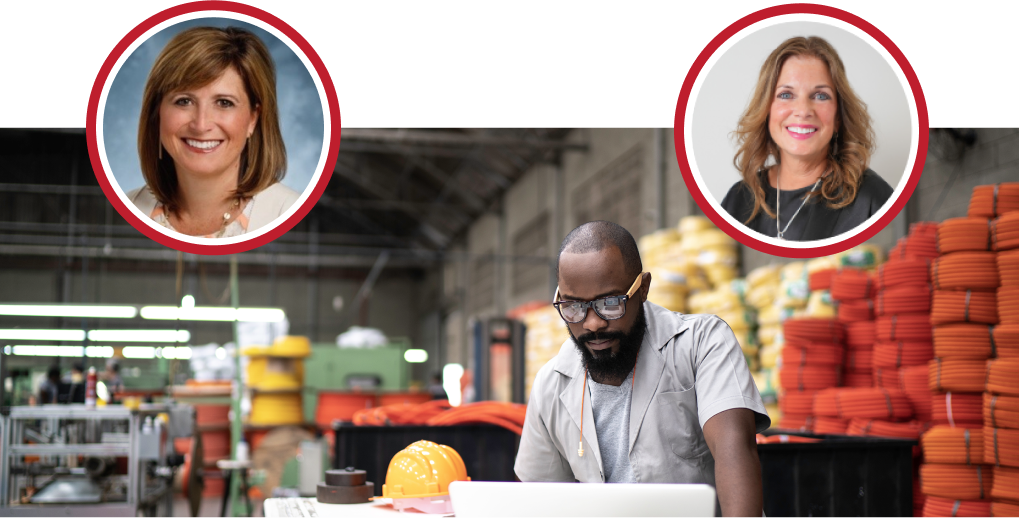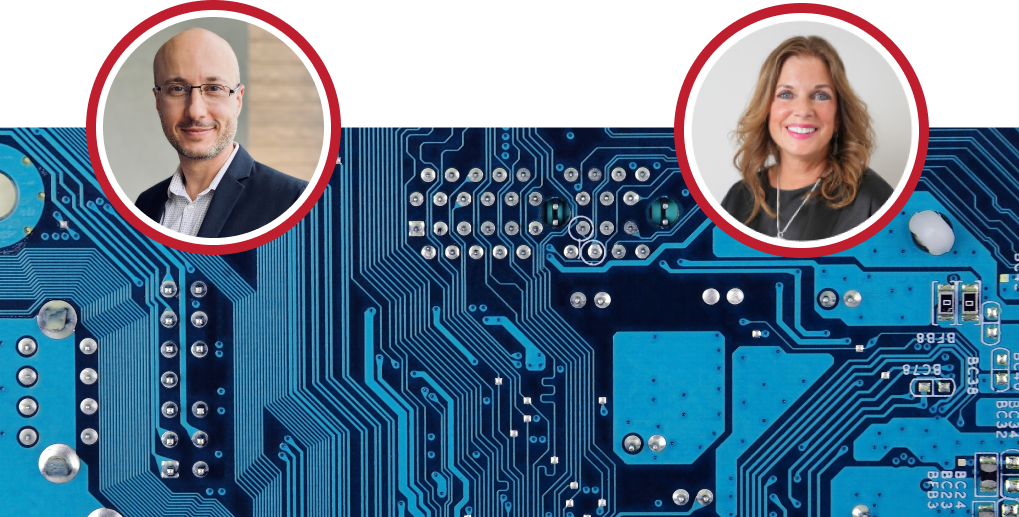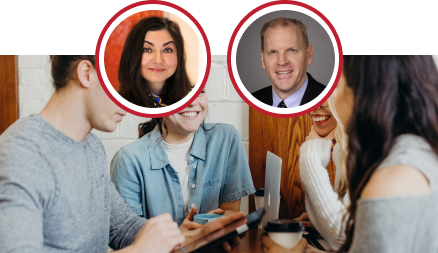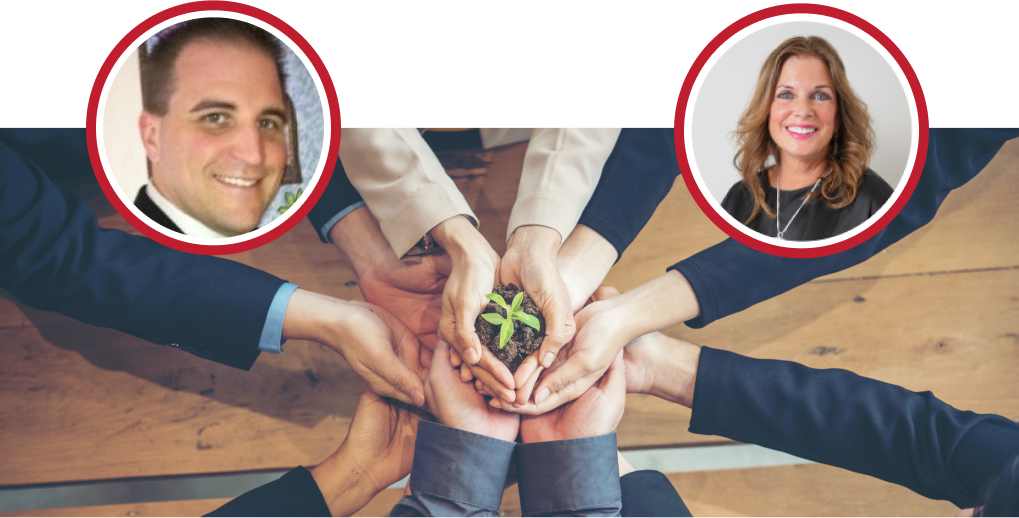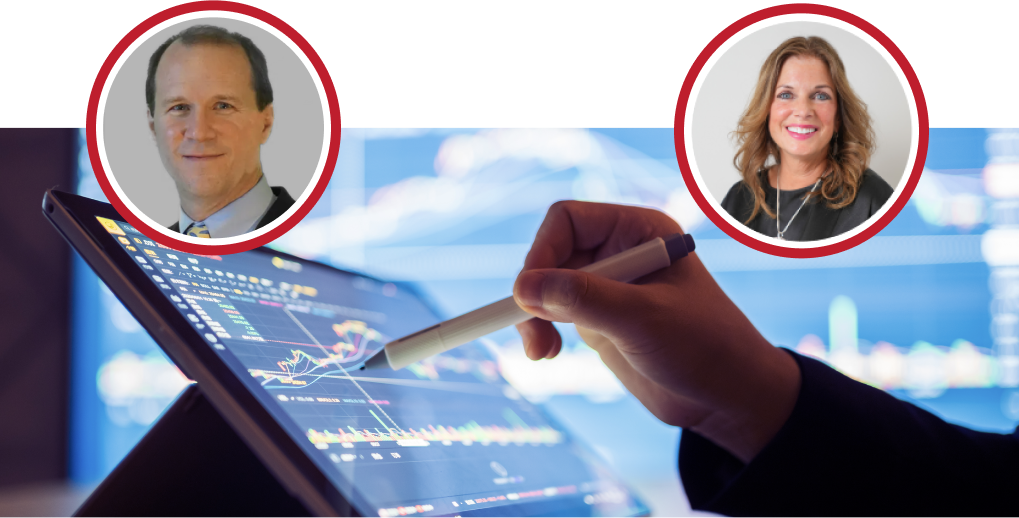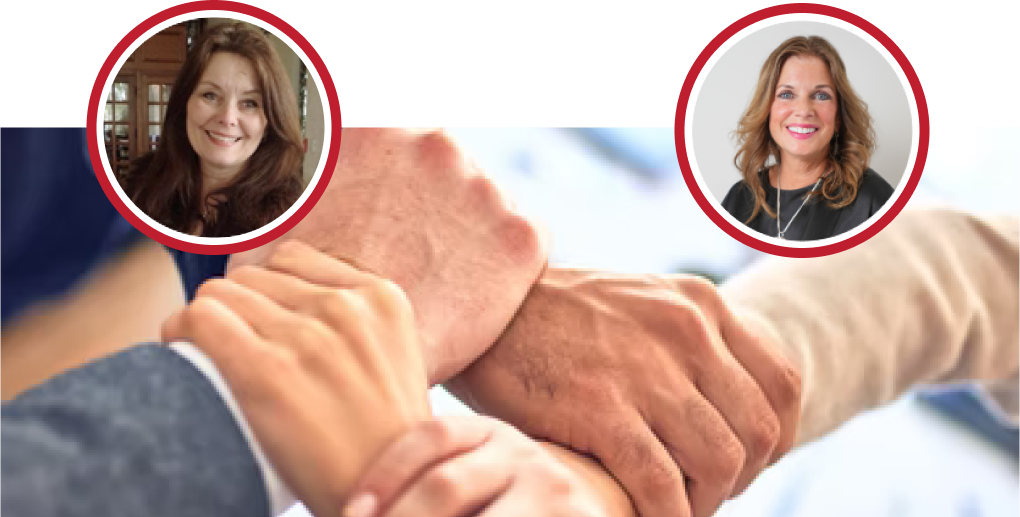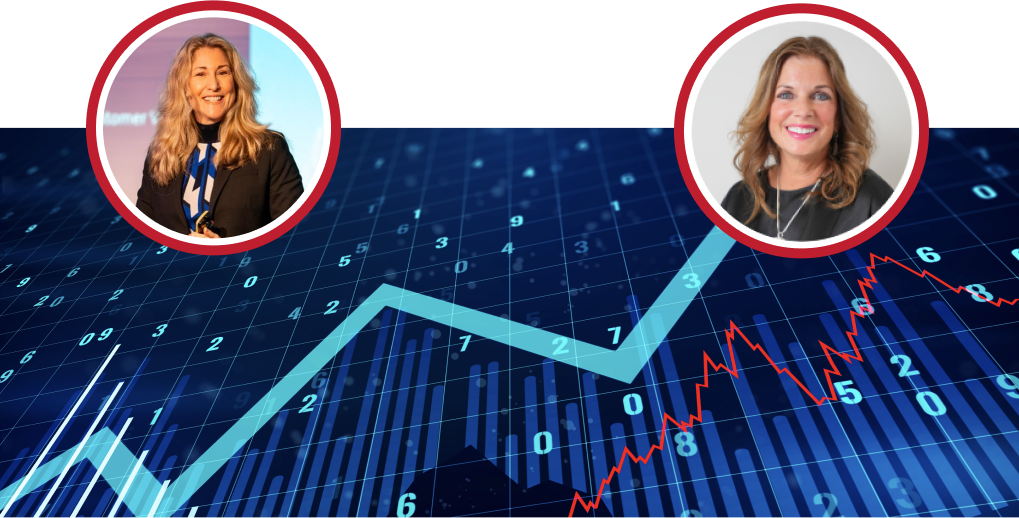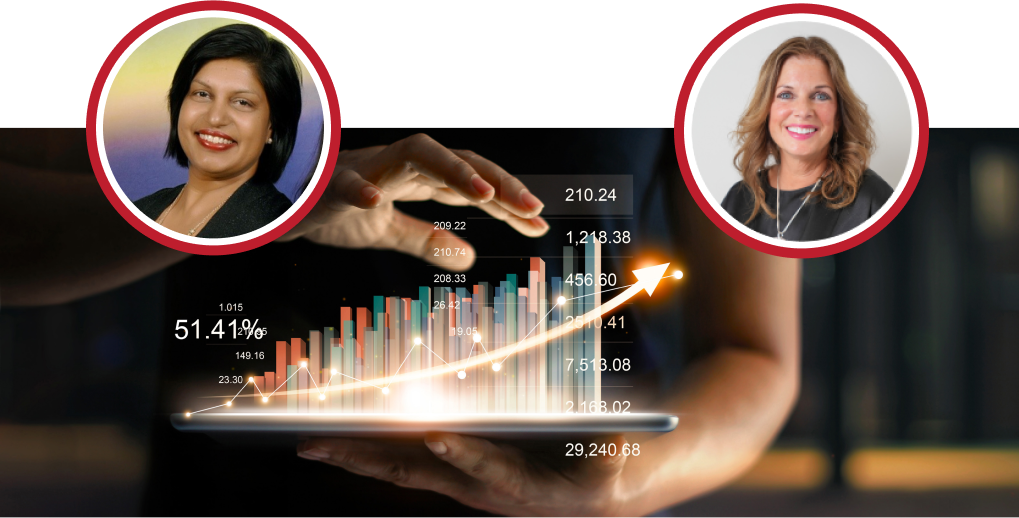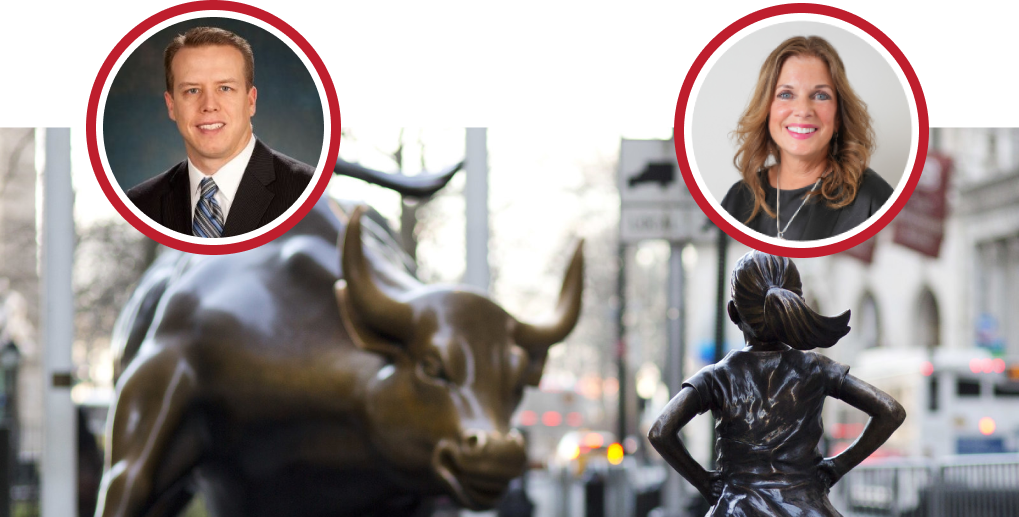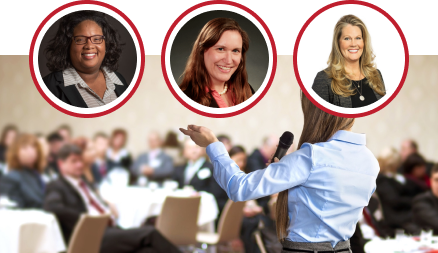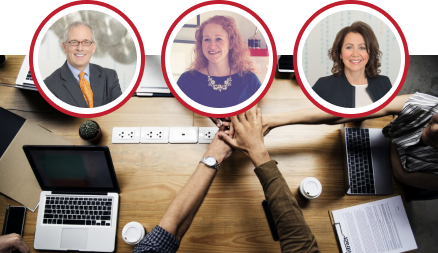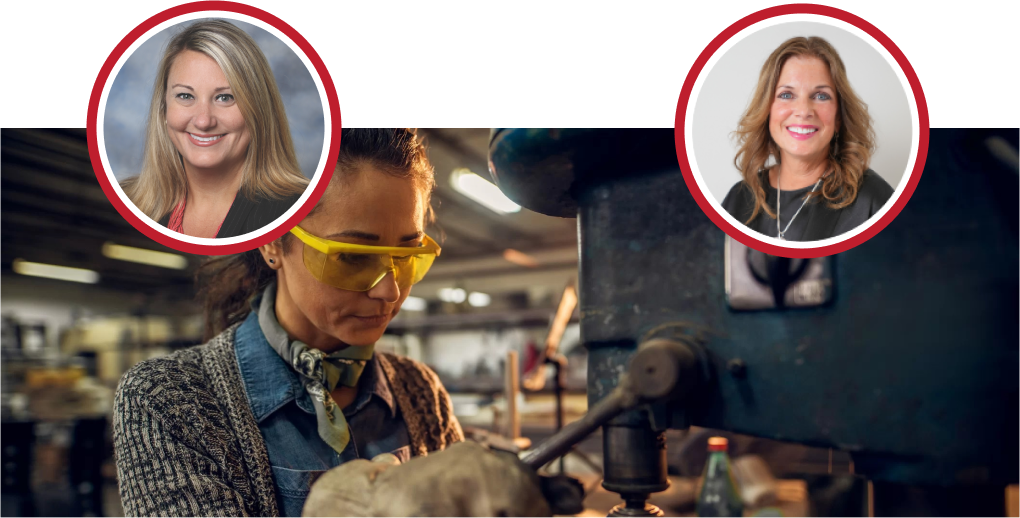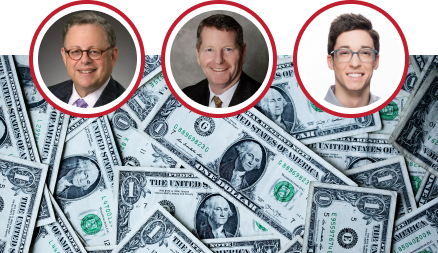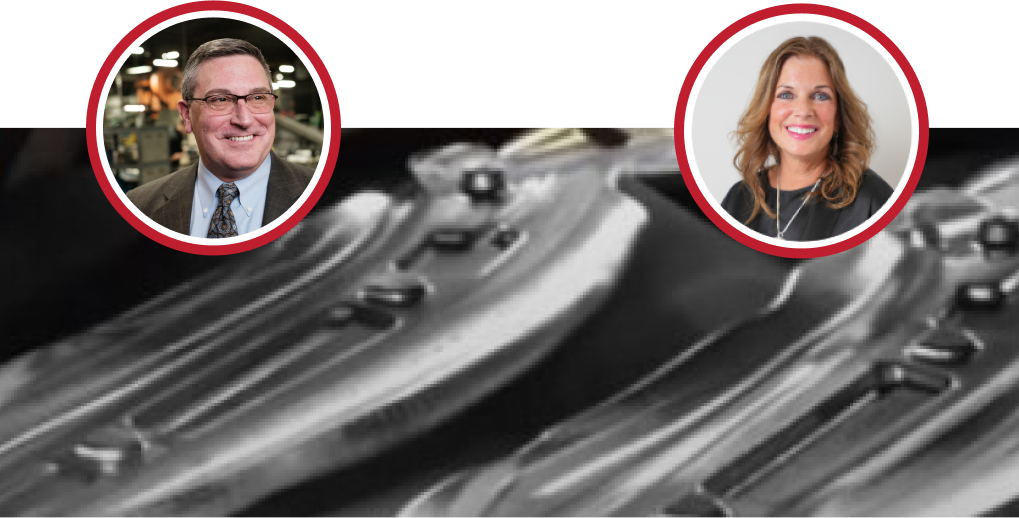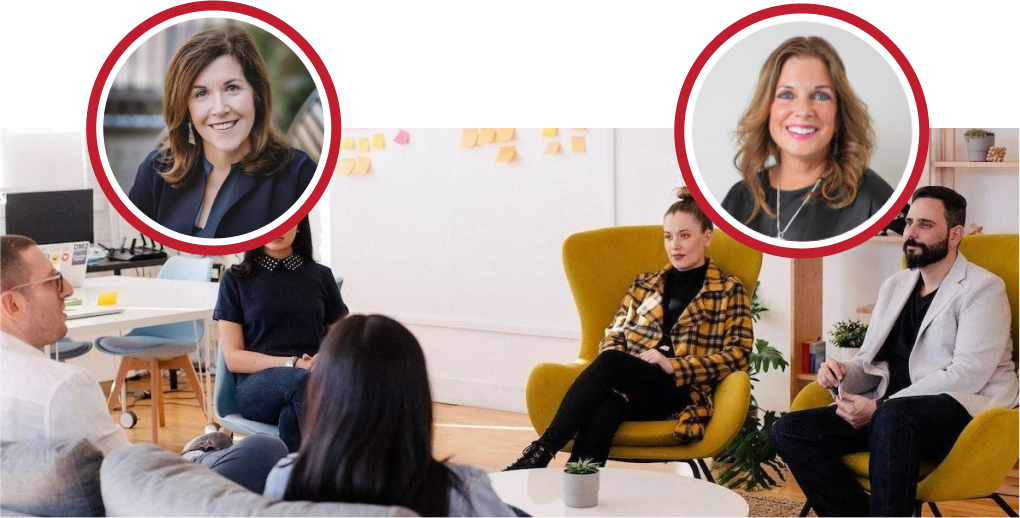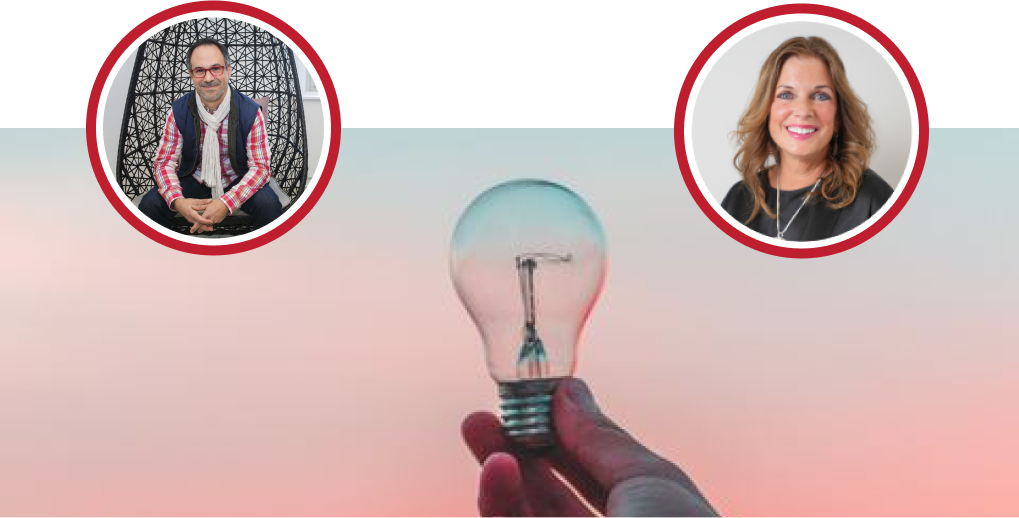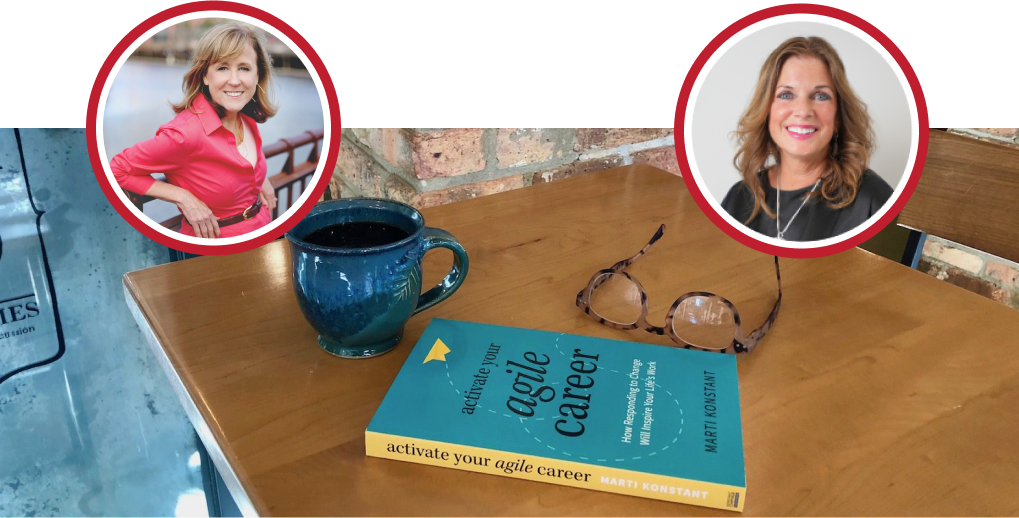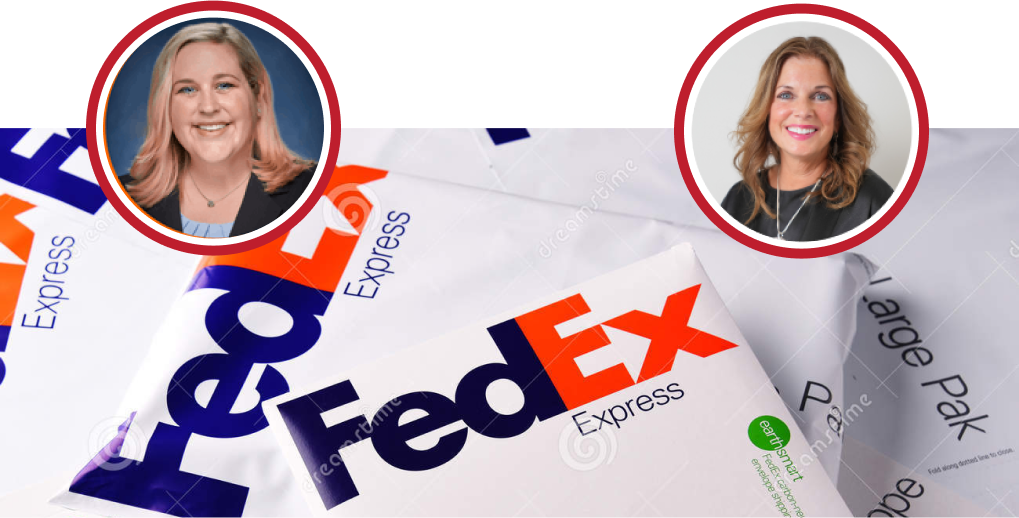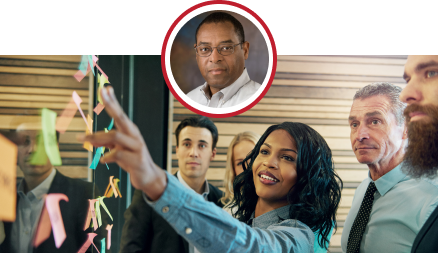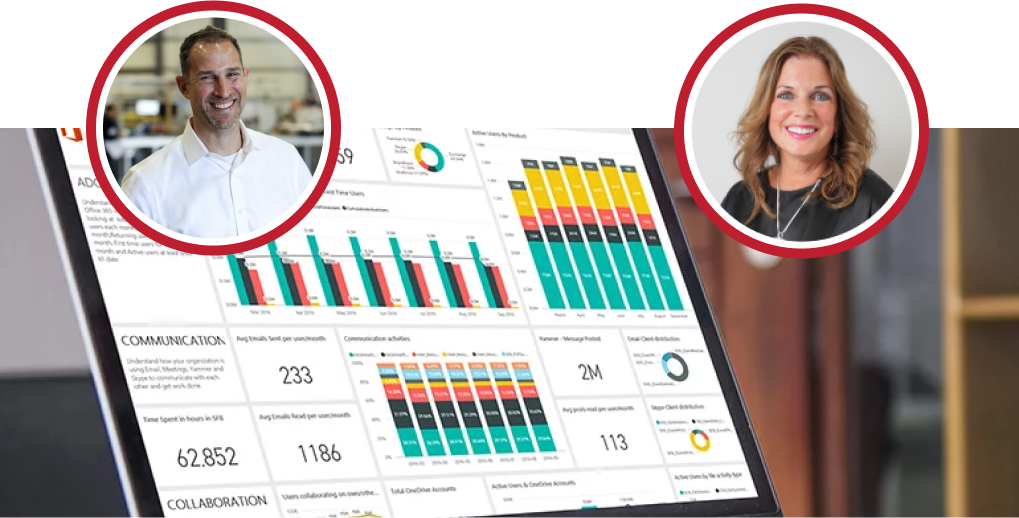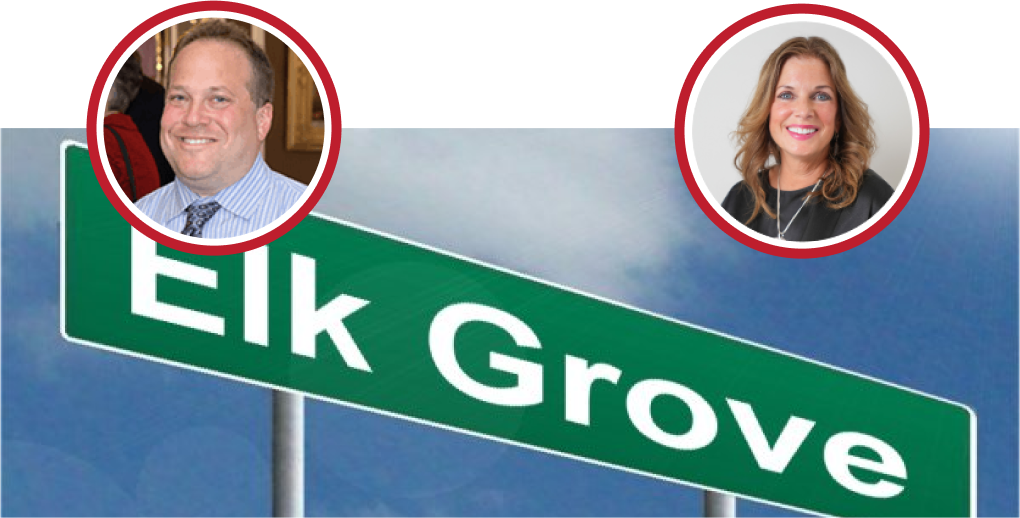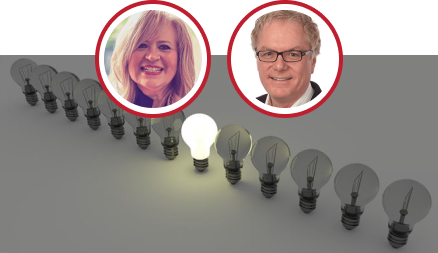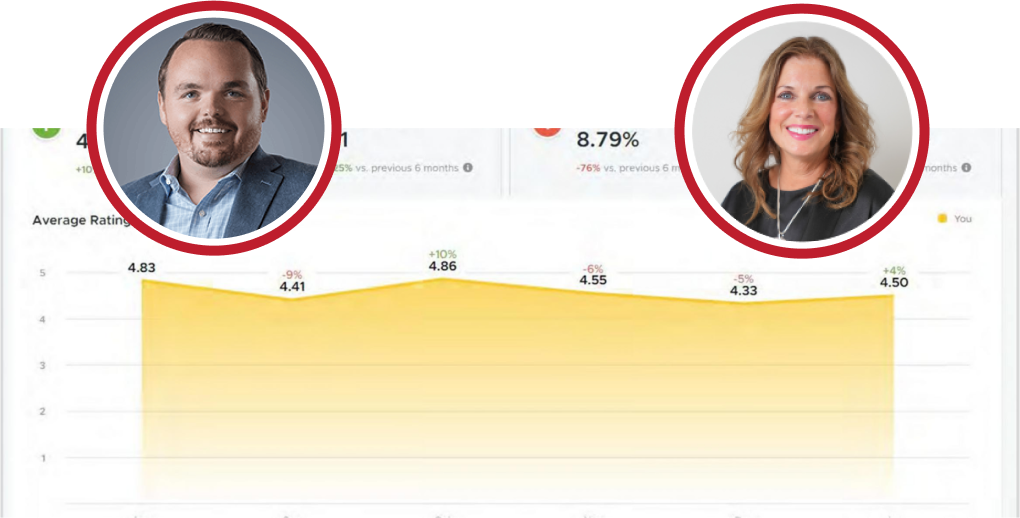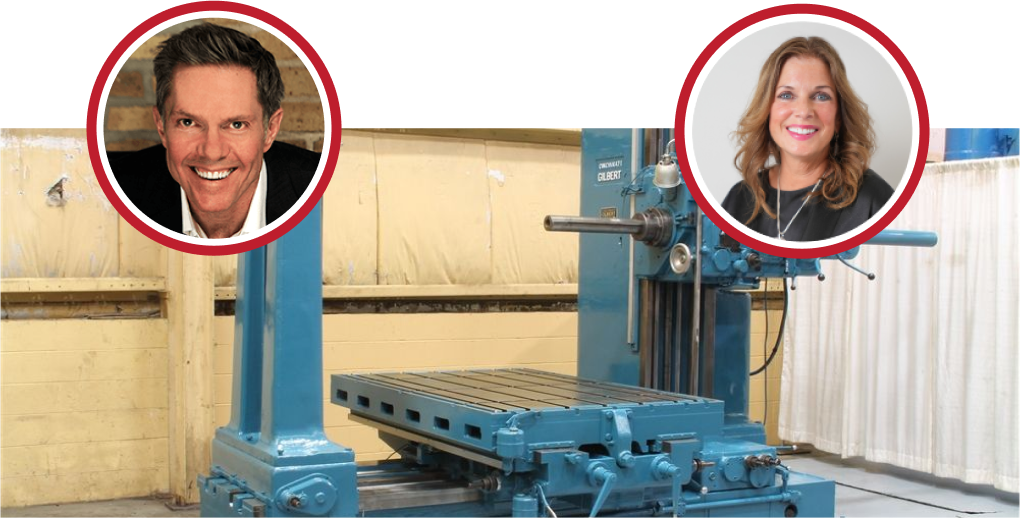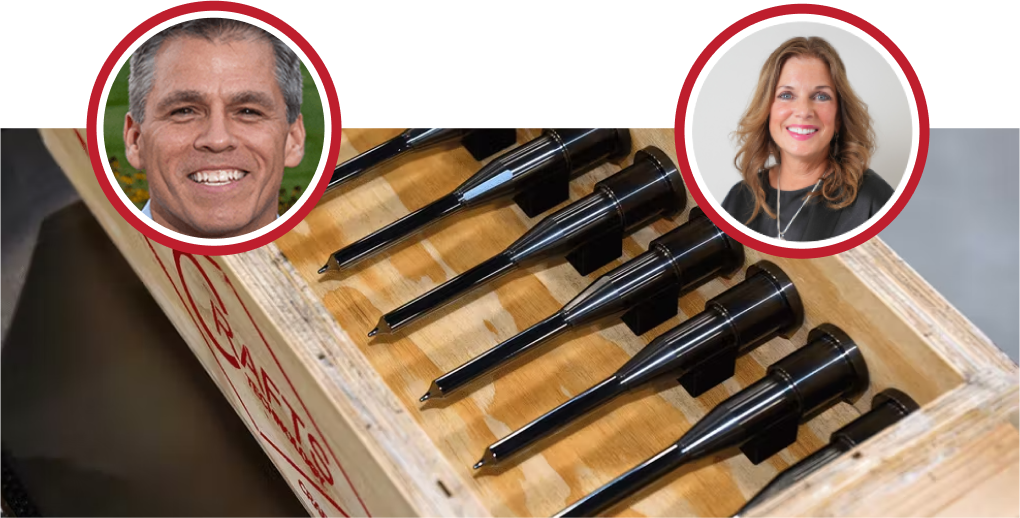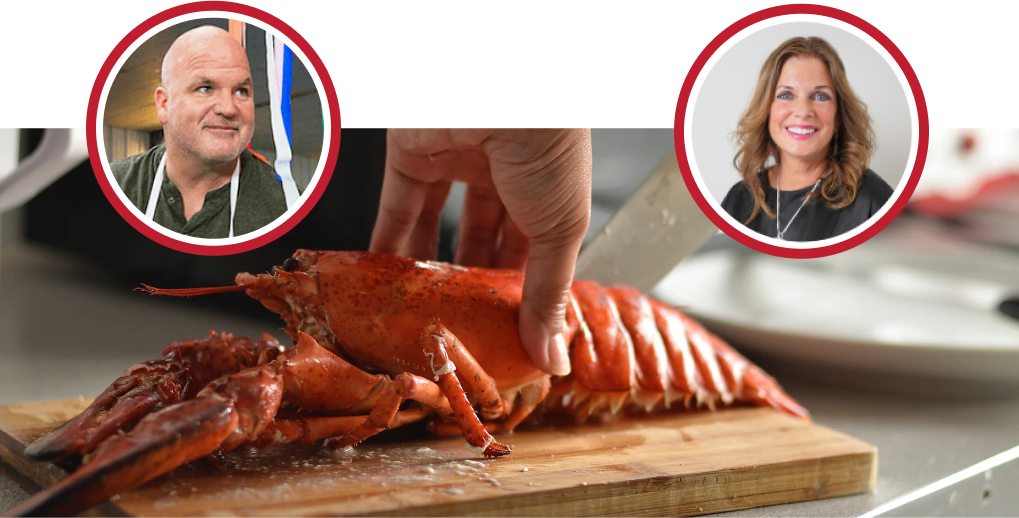Lisa: Well, thank you again for joining today’s “Business as Unusual“ webinar series, where we are talking to badass industry leaders who are helping us survive and thrive in today’s economic climate. My name is Lisa Behning, I’m one of Red Caffeine’s Account Managers, and I’ll be the moderator for today’s session. We are very excited to have best-selling author and workplace futurist Marti Konstant joining us today, as well as Kathy Steele, Principal and Owner of Red Caffeine. I’ll go ahead and introduce them in just a moment, but we’d like to cover a few housekeeping things. First, today’s webinar is really meant to be an interactive conversation, and I cannot stress that enough, so throughout the session, please go ahead and add your questions into the chat feature or the QA option; you can access those on the bottom of your screen if you’d like to actually ask a question live we are going to open that up today. So, either let me know in the chat that you have a question, or you can also use the raise hand option, and we’ll go ahead and unmute your line. So, you can ask a question of Marty and Kathy; we will be taking questions and answering them throughout today’s session. So, I really encourage you to be interactive to be in the chat function and really communicate because we’re hoping you will get a lot out of this session today with that; I also wanted to give a shout-out since we are trying to support other businesses during this economic climate especially our restaurants who have been so hard hit, we did give out free lunch for the first five registrants today who were Bernice Larry, John Marine, and Arlene. I see Arlene already placed her order for Delicious de Abuela in Tamarac, Florida. So, glad to see a participant from coast to coast today. We even have a few people signing on from South Africa; so wonderful to see that we are now on an international scale. So, again let’s make this a wonderful conversation that is very interactive and very enjoyable for all of us know. I’d like to go ahead and introduce our speakers. So, first going to start off with Kathy, our host for today’s session. Recently Kathy told us she is a badass because that’s where we are at Red Caffeine. She is passionate about people obsessed with helping businesses grow and loving to support the underdog causes in our communities; as a business leader, Kathy is an educated risk-taker who persevered through challenging economic conditions and a business divorce to become a two-time honoree at inc. Magazine’s annual list of America’s fastest-growing private companies. So, Kathy as I said will be our host today, and now for our honored guest Marty Konstant Marty, shared with us before our session day a couple of questions can you adapt to the accelerated pace of change to stay relevant in today’s world our guest Marty it really researches how people respond, and adapt to change in the workplace our focus for today’s session as a top career influencer she has uncovered the one trait that helps you, and your organization flourish, and not flounder in today’s fast pacing, and fast changing environment as I mentioned earlier she’s a workplace futurist keynote speaker, and best-selling author, and as you’re going to hear from her today her core belief is adapted or get left behind a few personal things about Marty as a runner, and mom hiker across several continents’ movement, and ability are central themes that shall also talk about today, yet there’s one cherished moment that really stands out, and stops her in her tracks she has met, and hugged a toddler panda in China, and I’m hoping we’ll get to hear a little more about that as well. So, with that, I’d like to turn things over to Kathy and our guest Marty.
Kathy: Thanks so much, Lisa. Well, Marty, I’m so excited to have you here today; as we sort of touched on when we were prepping a few minutes ago, we have this incredible sort of intertwined network of people that we know, but this is the first time we’ve ever really met. So, I’m really excited to learn from you today, but you’ve got the most badass job title I’ve ever heard of. I actually googled it, and it said it confirmed it is a really, it’s like the coolest job in the world, but tell us a little bit about yourself, and how did you get in how did you get into this line of work, and just tell us a little bit about the story of your career journey?
Marti: Yeah, so that’s a really perfect question, Kathy. One of the ways that I got into it started a long, long time ago, and I’m going to talk about that in a minute, but the thing that I, as I am, was said in the brief introduction here is I’ve been very focused and concentrated on the topic of mobility, and agility and something happened to me when I was really younger that immobilized me, and that is why I got so engaged with this topic.
Kathy: Right, so I did want to ask one poll question before we get kicked off just to kind of catch the tempo of our attendees today, so how are you watching this webinar today? Are you standing up, Marty?
Marti: I’m standing up.
Kathy: Up, I’m sitting down, and are you wearing work? Wait, are you wearing sweatpants or workout clothes, and you can’t choose? It has to be either-or.
Marti: Yes, you cannot choose between standing up and wearing sweatpants. If you are wearing sweatpants or workout clothes, choose number three.
Lisa: Look, everyone, just a moment. So, yes, as they said, only one answer, but just trying to get a pulse on our audience today; we were talking about this earlier all of us for the presentation decided we had to be at our best today. So, we’re dressed up but would love to see where everybody else is at today as well.
Kathy: Yes, I’m donning a pair of heels for the first time in like six months. So, it’s a special day for some reason.
Lisa: All right. So, I’m going to go ahead and end the poll. I see we have the majority of our audience here and sharing our results. So, overall sitting down. So, I think two out of three Kathy and I are doing that Marty’s on the standing outside, and thank you for the one person who said they are wearing sweatpants, and workout clothes because I think, I’m sure the rest of us are in that same mode as well for sure.
Marti: And, there’s another question. I would like to add but not a poll one, and it would be something that you could comment on in the chat, or we could take it later, but if you could put it in the chat, why did you decide to attend a presentation or conversation on agility today what was it about the topic that attracted you here today. So, if you can put that in the comments, it would be great, and while you’re doing that, I would like to address one question I always get when we have a Zoom meeting, and I am participating, and it’s Marty what are all those sticky notes on the wall behind you, and they’re a part of a branding exercise that I did last year, and I loved everything that was written on them so much I saved them, and during this corona time, I thought what a great thing to do is to put all of those wonderful words, and expressions behind me. So, I’m surrounded by all this positivity and brand values all day, so that’s the first question so someone Jim Kales said, attempting to get good ideas to build agility among our team’s team agility is really an important part of this agility just doesn’t come in one flavor somebody says. Tamsen says, studying what it takes for the workplace to be future fit agility is one piece of what I think it takes. So, we’d love to hear more our work climate continues to change, and agility is more important than ever for our team tony said that Glennis Jeffrey said re-entering the workplace as head of business development and marketing part of a management team, so keen to know how it will help this new team what a great way to start that, and another one says. Eileen Ellen says our local economy has been built on retail, hospitality, and tourism. Oh my goodness, that has really been hit; consumer behavior has changed differently, right, Ellen? It’s a lot about pivoting, and responding to the change, so we’re going to be covering a lot of that, and we’re going to be covering concepts, and then the rest of it is more of a learning circle environment that we’re going to be establishing today because you’re going to be a part of this, and be able to ask more questions specifically. So, I will get started now with a few concepts about agility and then tell a little bit of my story that Kathy touched on at the beginning, and I’m doing it like this, so we can be interactive instead of you just witnessing a bunch of slideshows side share but let’s talk about the change you mentioned there is so much change, and companies, and individuals both do this they deny it they resist it this is what we were all doing at the beginning of the pandemic, and then we get into just a state of depression we call it despair, and at some point, we figure out how do we integrate with that how do we accept it this change curve has been used in leadership development its part of the Kubler Raw’s change curve developed in the 1960s still holds true today the next concept. It’s the concept of learning by doing I call this the now normal what we’re in the middle of right now it’s not the new it’s not the old it’s like we’re in this suspended state, and how do we accommodate all the change there’s so much change going on right now I call it the high density learning curve that shaded area there is what we’re all in the middle of how many of you have gotten better at conducting meetings remotely, and managing remote teams this is what happens [Music] another great concept of agility to address some of the questions that came up earlier is this notion that give yourself permission to experiment learn, and adapt this is inspired by Eric Reese’s feedback loop that he created as he created the lean startup it’s a lean it’s a lean methodology, and as we experiment we measure, and we learn, and we make adjustments, and we continue to do that, and we’re doing this in more compressed times now we don’t have the luxury we have to take the roles that we had before the pandemic, and adjust, and say what are the needs that we have now that we didn’t realize because there’s a lot of people as mentioned the hospitality tourism. I read an article this morning that a person in the hospitality space is now working in the healthcare recruitment space, and they learned from their role in hospitality the ability to listen, learn and be very empathetic to people’s points of view, and they were able to roll that over into the recruitment space for health care. So, I wrote a book called activate your agile career, but I don’t like to write things unless I research them heavily it took me five years to write that book so here are some results of what I found out when I was interviewing people I interviewed 120 people, and I commissioned primary research as well survey research, and I found out that all of us fall on a spectrum between stagnation, and agility between stagnation, and growth between flexible, and inflexible between steadfast, and agile, and usually when I pull people on this they want to be right here they see themselves as right here you’d be really curious if you have a moment if I were to tell you on a scale of one to five where do you think you fall on this scale what do you think it would be you could offer that that was quick pull creation there so while we’re doing that I’d like to introduce the career agility model that came out of all this now I talked about it as being career agility, but there are a lot of things in here that are relevant to organizations as well but let’s talk about the end of the individual because it starts with the individual before it becomes part of the organization so at the beginning of this we don’t know exactly what we want to do whether it’s mid-career or woman college or some kind of training, so we try to figure out who we are, and what we do, and what we don’t know do you want to do that flexibility do you want to do that I’d love to see the results.
Lisa: So, sharing the results now, as you said quickly on the fly here. So, please, I noticed my typo, but we’re set up.
Marti: Yeah, so that’s really it’s true to form that’s how people it’s an aspirational thing it’s kind of part of a branding thing we all want to be that, so we can close that one Lisa the poll , and so here’s the career agility mom we start out here we go through a whole design thinking phase, and this could be mid-career as well this could be for your business who am I what am I good at what am I strong at, and at some point we create a hypothesis in this case for business it could be a pivot we create a hypothesis where our business will be better, and then we get to this intersection here in the middle it’s an eight on its side, and there’s a series of things that similar the change curve you don’t have to go through all of them you can go in different order, but things like adapting to change creating an idea zone pursuing things in parallel as you explore them creating an awesome badass feedback squad I would say as well, and then you finish that, and then it’s always thinking about what is happening in the environment what’s happening economically financially or in public health like we’re going through right now what’s happening, and how do we make adjustments in the change, and if you need to go back to the beginning, and figure out more things that’s what you do so it’s an elegant model on a figure eight on its side, and there’s just two more here.
Lisa: Give me one moment, Marty. I did get a question. So, for those of you who are seeing trying to make Marty’s screen a little bit larger, if you go up to your upper right corner, there should be one called speaker view or gallery view, so depending on how your zoom is set up if you click on that I’m going to see if that’ll change things here so as I’m speaking now on my screen I’ve clicked to the gallery it makes it larger so if you do want to see Marty’s slides click either speaker or gallery view upper right corner that should enlarge your screen or change it hopefully you can view things a little bit better we do have these up as PowerPoint slides later, so we’ll pull them back up for you.
Marti: So, this is what the last one looked like I’m going to take my face away from it, and put it all up into the screen just so you can see it a little bit more clearly, and so this one is talking about the traditional state of work I talk about hiring for agility in order to become an agile organization you need to think about hiring for agility the traditional state of work is like this, and this is what a lot of us experienced a long time ago or not so long ago that you start here you’re highly engaged you’re really excited about the work that you’re doing you master it everybody wants to master work that’s a good thing but what’s really not a good thing is when it declines your engagement suffers that way the organization suffers this is the traditional state of work that we want to change the way to do this is what I call let’s enter the project economy it’s not just that 35 to 40 of our workforce is already working in a consultant gig economy worker sort of way but within the organization. We can think about this as well how do we keep people engaged within the organization? You take one project, and just as it gets less interesting, you’re already navigating to something that is more interesting; you could do this; let’s talk about the role of marketing; you could do this in several aspects of marketing, and continue on, and be much more engaged than if you just mastered the technique of data analytics, and didn’t know where else to go with that there are a lot of things you can do for that. So, this is the future of work; it’s a series of projects; the more that individuals think about this, they’re going to be more engaged in their work, so now we can get to the slides; dude, we just have four they’re real quick about 30 seconds each, so a lot of people ask me how did you get how did you create an agility model what gave you the idea I’m a little bit geeky in this way in that I’ve always worked around technology companies, and I’ve always I’ve marketed really strange in my former life I was a marketer, I was a designer, and I noticed that these engineers these software engineers, in particular, were processing their work through agile software development, and I thought this is just so great, and I got involved with a group of global marketers about 25 of us in San Francisco in 2012. We created an agile marketing manifesto we applied agile principles to the profession of marketing so that we too could collaborate, run sprints, learn, and adjust to being more flexible and responsive to the market, so at 30 000 feet, when I was on the way home from that event, I thought why couldn’t this applies to the individual agility mindset, and I got so excited about it, I started writing about it, eight years ago, and if you type in words career agility now on your browser my work will come up because that did not exist in 2012. So, next slide, so Kathy asked me how did you get interested in this, and this was the moment of my childhood moment really was I was totally immobilized at the age of 13. I call it total it was from the waist up to the neck, and I was wearing a full body braid it’s because I had a curvature, and this was one way of growing a little bit, and in lengthening that curvature, so I wouldn’t have pain later on it was a horrible thing for a 13-year-old going into high school to deal with, and I just felt so stuck I just thought what am I going to do I didn’t have the mental capacity when it first happened like what am I going to do with this, and I’m sure everyone whether you’re a business or an individual has felt stuck at some time so next slide so so what as I go into this the rest of that story is I made a decision when I was 13 that I wasn’t going to let this get the best of me I may have been immobilized, and I couldn’t go swimming I couldn’t do sports I couldn’t do dances I couldn’t sit at football games, and that kind of thing, but I had control of my mental capacity, and my mental abilities, so I focused on my own mental agility studied really hard got into the college of my choice made really great friends, and dreamt almost every day of what it would be like when that brace came off, and as that race came off not just one month not just one year but three, and a half years later when that breast race came off I just thought I could absolutely do anything I set my mind to so in many ways that was a very positive influence in my life so what do I do with all these agility , I learned it as a child I was up in the airplane, and thought about applying these principles, and I wrote a book about from the individual’s perspective, but my real passion was how do we apply this to organizations, and which organizations want every organization wants happy profitable employees not just from the perspective of the organization, but the individual has to feel that as well it’s a two-way street, and I say to organizations, and individuals cultivate career agility don’t fight it, and this happens to be the title of a white paper I wrote directly to organizations, and to individuals it’s a 30-page white paper on this topic, and all of you are going to get access to it when Lisa sends out the follow-up email so for your participation here you’re going to get a little bonus material here, so we’ll go to the next slide it’s actually the last slide before our conversation, and one of the charts in this white paper is agility isn’t just about what a person thinks people used to say oh CPU agility that’s people job hopping right Marty I said no it’s not it’s so much more than that it’s about growth it’s about a mindset focus it’s about career evolution it’s about business evolution it’s about integrating learning agility into your organization, and it’s about allowing your people to have workplace experimentation as a value individual workers that are agile are curious they respond to change they view their career as a series of projects they’re highly engaged agile leadership then is able to work with a workforce that’s both alternative, and permanent as I said before almost 40 of our workforce is in the alternative workforce so as leaders we have to figure out how to manage all of that too it’s not just the people that work for us or come into work or work remotely as we are right now, and the organizational benefits are just really it’s about you can respond to change more rapidly it’s been said that the innovation, and experimentation the experimentation leads to innovation you don’t have experimentation you don’t have that, and you have increased worker ROI so on that note these are some of the benefits, and I wanted to mention just a few companies that didn’t follow this type of mindset, and they go back 10 years we can go back to blockbuster video we can go back to just stalwart companies like blackberry does everybody remember blackberry it was the dominant player of executives for executives, and businesses, and they missed the mark on not they assumed that everybody needed a keyboard on their mobile phone , and we had Nokia did didn’t see the smartphone coming same thing, and on some of the marketing materials that we sent our we talked about hertz , and a couple other sales jewelers these companies these big companies are companies that we thought would be around forever are filing for bankruptcy, so these are the downside of what can happen if you’re not adapting to change if you’re not adaptable as an individual the downside is you become irrelevant really fast so as an organization if we are not thinking about what are the roles that we need to advance what are the upskilling, and the reskilling initiatives that we have to get going in our organization so that we can continue to flourish out of this situation that we’re in right now in our public health situation, and I’d like to open up the , conversation here with Kathy, and others that are participating today.
Kathy: Yes, Marty, thank you so much. I think the one question I have right out of the gate is there’s that agility versus steadfast sort of access, and just kind of speak to that characteristic of a stud fast versus more agile.
Marti: Thank you, Lisa. Magic, yeah, so we can say stagnation. We can say steadfast. They are similar ones, but a little bit more positive there are roles that being steadfast is critically important, and where we’re talking, the roles that are more up on this other side of the growth pattern are in the business environment; they’re not necessarily mastering a technique on the manufacturing floor. So, that could be a very positive aspect of a person that is steadfast, knows their work, and is willing to reproduce it in the way that makes for great products; however, even with someone who does things repetitively, it can also be a challenge if that person isn’t thinking about what is it that I can do to help grow?
Kathy: Another thought, Marty, I had was when you were talking about experimentation, I love that thought in theory, but its difficult experimentation sounds so great, and psychological safety obviously needs to be in place in your organization, and it to really successfully iterate in my view, but we’ve all grown up being scored for getting things right we’re getting we are striving for A or A-plus. So, how do you bring that experimentation philosophy to a workplace to get you to know to get people to iterate and be more agile?
Marti: Yeah, so there’s what we call agile transformation is going on maybe in about 12 to 15 of the companies right now. It’s a hard thing to adapt to this agile transformation, but people if the way that it works best is to not take it on as a huge big project and break it down into a smaller a, low-hanging fruit type of wind so if you’re in HR for instance, and you’re trying to assess how what are the roles that are going to be important because some of them aren’t relevant right now not just because of the pandemic just because of technology, and automation, and a lot of times people get stuck because that assessment is like a six-month analysis it goes on, and on there’s a committee let’s break it down let’s explore two particular areas or roles add them upskill for them, and see how that works out to create a small experiment get some success under your belt before you make it bigger.
Kathy: Yeah, I mean, I think this is going to be hugely important for both people in a career search as well as organizations. I mean, we’ve just seen such incredible pivots from people that are one day making pizzas, and the next day they’re making PPE equipment. So, it’s just it’s fascinating, and I can’t get enough of seeing how people are using innovation and thinking more agilely.
Lisa: We actually had one of our audience members weigh in. Tony said one positive fact of everything struggling with our typical business and the current Covid pandemic is that it is forcing us to experiment in order to survive, so I love the sentiment. I’ve actually got a few questions coming in I’d love to answer from our audience. So, the first one comes from Tasman. It’s a two-part one for you, Marty, so she writes, I appreciate you are seeing a continuum on the stagnation and growth curve, but in some roles, study fastness is essential, and that doesn’t necessarily mean no growth. So, how can we consider agility even with role commitment is how she put it?
Marti: Yeah, so if it’s a role, say it’s one function of marketing that a person is really good at, and they actually don’t want to gravitate or advance in a way that another person would, so that I used the example earlier of the data analytics if someone just really loves to grind through the analytics and provide the insights one of the ways that they could think about growth is to not just do the technical aspects of the analytics but to really get into the insights, and the growth, and how can I take this data, and help the next person that’s going to take this data make it a little bit easier for them to understand the data these insights are hard to extract from the data at times. So, I think that would be an example of the growth of someone becoming more strategic, so whatever it is that you’re doing, there’s always something you can do to add on growth even though it’s not a complete rule change.
Kathy: Yeah, I was going to just add on to an experience or to a company I knew that they were content they’re an accounting firm they were contemplating transforming to the great game of business. So, being an open book, I was kind of stunned by the fact that accounting wouldn’t really understand the business impact of the financials that they were looking at day in and day out until they connected to that more transparent view of their own organization, and how the checks, and balances needed to be in place it really was a huge eye-opener. So, I love that even with an accounting firm where you would naturally think they’d get you to know an income statement and the implications on the business, they were just doing the numbers. They were just doing the input, so I think that’s so interesting to see how things can go just with a little more information; you can really involve a mindset.
Marti: Yeah, and I’d like to add to that too. I worked with a CFO at my last growth-stage tech company in the mobile security space, and after years of experience and accounting, and being a CFO, and all that, he was probably one of the most strategic people on the management team I was the chief marketer on that particular management team, and he was so good he was good for pitching to investors because he knew the numbers, but he was also I would use him as a confidant when I was trying to figure out certain marketing strategies he just was so good he understood the market very well, and he was also very receptive when it came to asking me like well why should I spend six percent on this on the budget he was always very receptive if I would bring him data he was a data guy, so it goes both ways I became more data-centric so that I could make the case to get a bigger budget for my department.
Lisa: So, I’m going to jump back in here; we’re going to answer the second part of Tazman’s questions, and I actually have two questions from Glennis and Larry that are similar regarding teams actually, so is Tasman’s too. So, in the second part of Tasman’s question, I’m also interested in the relationship you see Marty between agility and resilience, and we’re going to frame resilience not as it’s usually defined but looking at resilience as being collectively useful to the workforce so the agility of the team, and others not just yourself.
Kathy: Right, so a lot I get that, question a lot Tasman, and I about its relationship to resilience people get right away oh you have to be resilient, and persistent, and all this sort of thing if you want to be agile, and I think this being able to this all boils down to training, and culture everything boils down to culture if the organization believes, and makes available the training for this the power skills they call them resilience learning communication agility if organizations have a formal way of extending this knowledge of how to be like this, and how to do like this it’s just as important as the upskilling of technical skill or the reskilling of something that’s no longer needed because it’s automated.
Lisa: Kathy, anything you want to add to that before we switch to our team focus questions? No, let’s go; let’s get to the questions. I love it, so I’m going to kind of group one question from Glennis, and one from Larry, both our own team, so I’m going to phrase both of them for you, Marty, so Larry’s question is when leading a team, how do if you’re striking the right balance between agility, and consistency. So, you’re not losing engagement from too much change, and then Glenn has had a question that’s a little similar like if you’ve got a cross-functional team, is that being agile are you engaging in agile behaviors, how are those kinds of both playing together?
Marti: These are really complex questions, and as you were framing them out, I started thinking in my mind; you can see I do a lot through drawing; my whole Instagram channel is little drawings. So, I was drawing right away what this looks like, and I think people that can think about you might not know what an agile team is. You might not know what a scrum master is, but I guarantee you will know in the future because this is the way that organizations are going to grow. They work on projects together. They often have cross-functional aspects of them, and they are short scrum meetings that they have on a regular basis, and they break everything down into small enough sprints. So that they all understand what is going on, what’s working and what’s not, and getting that done, and they often compliment that whole organizational structure with a project manager, not always but having a project management background. I love having a project manager in that team so that everyone’s voice is heard and that we’re able to take these projects that we want to move forward and do so.
Kathy: Yeah, I recently described it to one of our new employees like a relay base; that there had to be that baton handoff between different individuals on the team and communication, and it could be verbal and non-verbal, but we just had to we had to know our place what sequences were gonna what is going to take place in getting something to the finish line, and it really was like running a relay race between, and I’m sure it gets more complex that’s like one person handing off to another person, and some teams need multiple people working together in different sequences like maybe in a hospital or operating room where you’re doing surgery or something like that.
Marti: And I’d like to add to that if this will be a yes, and these there are handoffs, but there’s also things particularly in project management ease there are things that you can break down the program, and you can break down what can be done in parallel, and what can be done in sequence, and we used to only do things in sequence, and now in these teams there are a lot of relays going on projects that are being done in parallel, so there’s its a lot of moving parts it’s like an orchestra of things working together, and all having, and the main thing is having the goal in front of you, and having those meetings where are we at how are we doing, and if we’re having a challenge what are the adjustments that we have to make to this deadline or not it’s like when Kennedy said we’re going to put a man on the moon in 10 years they did it in 10 years it was a goal it was a mission it was a rallying cry, and we would like to think that the things that really cannot move like a trade show or something it’s the date’s not going to change. So, you can’t change those days, but other things you can, certain product development pieces you absolutely can.
Lisa: So, one quick question, are you listed right before these four power skills? Could you repeat those for the audience?
Marti: I repeated resilience communication agility; there’s probably a dozen of them. Let me see, I forget, I have three of them on the top of my head, but it’s the kind of skills that are necessary to empathy is, probably the number one empathy is the biggest power skill, and agility is probably right behind it communication in fact I’m you could argue that communication could be number one, but I think that kind of those kinds of skills are just as important the other power skill that isn’t talked about as much, but we say that it’s necessary for us to exist as companies today is creativity if we don’t have creativity we don’t have innovation we don’t have new products we can’t continue we will fade away.
Lisa: So, speaking of kind of your team and those skills, obviously you want to cultivate those with our employees. Have you seen any effective reward systems to help promote agility within a company? So, now we’re getting into extrinsic and extrinsic rewards. An extrinsic reward would be money, something like that, or a party intrinsic would be has to do with the culture and how a person feels about their commitment to that goal, so a lot of times, the reward system in sales the reward systems are contests so sometimes as simple as a contest can be very successful it doesn’t necessarily mean you’re gonna win a car or anything, but it could be just something that you get an award for I know I worked on a committee for an association I was working on, and I got it sitting over here I got the wordsmith award, and it was totally a surprise, and it made me want to work really hard and do more volunteer work for this association, and it’s a little it’s an award, so I think it’s the classic stuff that kids get I was a swimmer you get these swimming ribbons and trophies.
Kathy: So, I hope to go ahead, Kathy. I wanted to go back to your one diagram because I, I was thinking about our younger workforce, and obviously, we’ve had such a shift in unemployment, and things like that, but I there am you talk about agility, but in my experience with working with younger people there is some need for them to see a career path I would hear like what’s my next step before they’ve barely been in their first step they’re asking about their next step. So, I’m wondering what your thoughts are around that type of thinking for both employers and employees because I just felt like that was the one thing that stuck out to me that I haven’t exactly seen play out on, and I don’t know Lisa, it’s more it’s the diagram of all the different.
Marti: Oh, is it the agility model?
Kathy: Well, it doesn’t matter, go ahead, and if you wouldn’t mind, kind of give your thought?
Marti: So, I was chatting. I’m a mentor to a lot of people, and I mentored a millennial person that has grown up in her career, and she would come to me like after a few months’ oh, those VIPs don’t know what they’re doing she worked at a pr firm she said those VIPs don’t know what they’re doing, and I got to get out of here, and I said talk to me what’s bothering me, and she said well there are a lot of things that are broken, and I go well why don’t you stay, and fix it, and she goes what do you mean I go well start talking to some your boss, and other people in the organization I go what’s your idea, and she goes well a lot of our new people that are graduating are getting burnt out in New York, and they’re leaving within six months, and I, and he said I think we need training, and I said well do you want to do that, and she said well yeah I’d like to I said pitch it to get some feedback from the people within the organization pitch it, and so in her case she created three unique roles within the organization over a period of about eight or nine years, so I think a lot of people, and it’s not just young people, but we all need a mentor we all need someone to talk to we need reverse mentoring we need regular mentoring, and that we need someone to talk to. So, I think this energy and wanting to get to the next thing it’s very normal. It’s different from the way that it was the way that the workplace was before, but I think it’s challenging us in ways that what can we do as leaders to engage this person. Maybe it’s getting them involved in a really cool project that speaks to their soul.
Lisa: A great point, Marty. I know we talked a lot about mentorship. I’m actually going to go ahead and put a poll on the screen just to see where everyone’s at; barney was talking to me previously as we got ready for this webinar about the importance of having a mentor, and there’s a target age range so while they’re answering the question Marty would you mind explaining why you feel that 10 to 15 years is a good sweet spot for a mentor?
Marti: Yeah, so what’s happened is you can say if you had a mentor that’s 10 to 15 years older, but 80 percent of the people generally say no, and the reason is we don’t all have that perfect mentor, and what do we do instead well I created this thing called the activate your feedback squad you have reverse mentoring you have a peer group you have mastermind groups that you can participate in to get feedback on how you want to do something so in the case of the millennial that I was working with I was that ideal older person, so it looks like some of them may have so the vast majority of them have had mentors 10 to 15 years older that’s not typical in an audience in corporations, but I think it’s super important but understand that the definition of a mentor can be a lot of different things they don’t have to be 10 to 15 years older, and they don’t have to be long-term it could be as simple as I call them opportunistic mentorship you’re working on a program you just don’t you’ve never done it before you don’t know how to do it, but someone knows a lot about that, and you ask them, and you chat with them over a period of a week or two situational mentorship situational feedback. So, don’t wait for the organization to give you a mentor.
Lisa: Well, and I think it’s great; it actually speaks. I want to go back up to Glennis and ask a question a little bit earlier that also plays into a question that we had ahead of time that I’ve been holding. So, let us want to know how you encourage people who are currently struggling with unemployment to become agile, and I know Marty, one of the other questions I got in is how can I continue to flex my kind of agile muscles. So, I’m gonna pull back up your project charts. I know you had some really great insights there.
Marti: Yeah, so, so the project economy. It’s really thinking about becoming more agile; there are principles it’s collecting ideas on a regular basis and cross-pollinating your thinking. So, if you are really into accounting, it might be a great thing for you also to have a hobby in astronomy where you see patterns in a different way, and so these are ways that you can cultivate an agile mindset that might not be as visible to you, and to really collect ideas not just on where you want to go with your work, and what your vision is but collect ideas if you have just a crazy idea about something in the workplace document it saves it may not be applicable right now but make certain that you have that at the ready when you’re at the next brainstorm meeting. So, these are things, and then speaking to the slide, the project economy it’s the more you can break things down into projects, you can keep yourself more engaged. So, you may be on this big program, break it down into four discreet projects to create energy and excitement about it, and even with job seekers and job searchers, I’m doing a job searching talking points workshop in a couple of weeks, and it’s really about being flexible, and taking courses in personal branding understanding how to create really lively talking points or smart-talking points, and breaking that down into a big project because something like personal branding can be totally overwhelming for the new job seeker it’s like oh wait a minute I didn’t realize this was going to be 180 hours’ worth of work just break it down in a couple of more pieces, and maybe just start with your talking points that’s part of your mission that’s part of your values it’s part of your brand values behind me, it’s that kind of thing get into one of those kinds of exercises for yourself, and get engaged with it, and that engagement and enthusiasm will come out in your interviews.
Kathy: So, on that note, Marty, are there any interview questions in particular that employers should be considering asking in a potential hire?
Marti: I think, it’s some of its, more typical it’s asking them how they’ve responded to a particular thing or not even asking them a question the better way to get it at the inside of how a person is to say tell me a story about a time when something happened, and how did you grapple with it so tell me a time when failure was on the horizon you knew it was going to be a failure it happens what did you do those are the things that are going to get it rather than saying tell me your vision of five years or we want to give them something that is challenging and isn’t this perfect story that they leave for themselves for the interview.
Kathy: Great!
Marti: Paint the scenario.
Lisa: Side, another question come in Marty, and I know you’ve shared a really cool experience, so for all of our business owners or just a personal thing, so we talked earlier about being agile experimentation there’s that fear of putting something out there that feels half-baked maybe you’ve got it started I know you’re working on a cool project right now for the state of Illinois that maybe you could help illustrate that point of it’s not a bad thing in an agile mindset to put something out there, and figure it out as you go.
Marti: Right, so the one thing that I used to think of early on in my career is like it has to be perfect everything has to be done, and what I learned from the software engineers way back when is your test smaller bits, and you put it out there, and you share it you share your ideas, who knew sharing ideas like 20 years ago people kept everything so close to them, and didn’t want to release it because it was proprietary, and in these days so much of it is about sharing like I’ve been working on this project like this woman I got to tell you this really cool story she writes a newsletter called encouraging she’s in career services at university of Chicago, and she came up with this cool project called I want to get one million acts of encouragement between whatever she started, and the end of the year, and she created a simple form you don’t have to put a name you don’t you just have to put what state it was in, and then what state you’re in, and how did you feel about it exactly, and it’s not like she didn’t make it like a whole big website it’s like it’s a little form, and I just loved it, and I’m spreading it, and I want to make a million I mean , I want to help her, so I just I think her project is gonna just absolutely explode because she put it out there before it was perfect.
Kathy: Well, anybody that works at Red Caffeine knows I’m the queen of half-baked ideas. I love partially baking something and having a lot of collaboration out around getting it to the finish line, that’s for sure.
Marti: You must like, that what is that molten chocolate cake that is like half like it’s part of its just really luscious chocolate I go to my go-to dessert it pours out of the center that’s baked.
Kathy: Right, so Mark, Marty, I wanted to ask one more question about the profitable employers and employees; how do you can, you just expand on that? I know; we play the great game of getting business. So, we’re really keyed into making sure everybody understands their impact, so how does that play out in other organizations or for?
Marti: Well, when people are properly treated, and properly remunerated proper salary , if there’s a certain balance about it all so that kind of profit from the standpoint of the individual individuals totally get but what they need to understand with the relationship that they have with their employer the employers need to make profits so that they can exist there was a model that I was introduced to 20 years ago it was you could tell the size of a company if they were a consulting company by multiplying like if it was 20 consultants, and say it was a hundred thousand dollars a year whatever it was at the time, and you could multiply that out, and so if each person doesn’t make two hundred thousand dollars a year or a hundred thousand dollars a year the organization will not be profitable that’s just services, but I think the more that individuals understand the mechanisms that it takes for a company to be successful too, and that it is a two-way street it’s understanding employees now are much more free agents than they used to be , but that’s where we’ve evolved to that’s not good that’s not bad in fact in some cases I think it’s very good but it doesn’t have to it can be a very good a good tension if you will that an organization has with employees because you don’t stay with an organization forever it doesn’t happen our stats say it as such but when you’re there you want to be there a hundred, and ten percent, and you just want to give it your all those are the kind of employees you want, and that’s the expectation that the employer deserves.
Kathy: I could not.
Lisa: Well, Marty, thank you so much for all of your great advice and your insights; most of all, your energy is absolutely wonderful to have you here today, so for those of you, if you think of a question for Marty later, feel free to reach out to her on LinkedIn you can also email her at Marty Konstant change.com, you can go to our website too so as Marty mentioned earlier one of our takeaways today besides this great recording which all of you will be receiving or if you’re watching afterward I hope you enjoy this content as well we’ll also be sending out Marty’s white paper that she referenced a few times so great insights, and finding I have actually poured over it myself but something you’ll definitely want to read to help you involve those agile principles within your business or your own personal life as well.
Marti: Yeah, and they’ll have access to the career agility guide as well, so it’s both of them for attending today; so appreciated spending the time with you and loved your questions like are what I live for. So, thank you for that. They give me a lot of content for writing. I write a ton, so.
Lisa: Yes, definitely follow Marty’s blog, so as a special bonus today, I wanted to call it, which we didn’t share earlier; we want to thank you for your participation; this honestly makes the session, as Marty said, so Tom Glynis, and Tasman, you have actually won Marty’s book. So, we’ll be I’ll be emailing you to connect to get your mailing address to get that sent out to you, so congratulations, and thank you for participating today.
Marti: Yeah, and if you ever want to talk about it or have a coffee chat, on my weekly newsletter, I open up for coffee chats for just about anybody, and I like talking business. I like talking careers, I like talking growth, and I really appreciate meeting new and interesting people.
Lisa: Well, speaking of new and interesting people, we’re looking forward to our next session, which is August 25th. We are going to be speaking with Moises Norena; he is the Vice President of Innovation at Moen and has also been with Allstate and Whirlpool in his 20-plus years in innovation. So, just as Marty was sharing today that arc of innovation agility and creativity moistness is really going to break things down for us on how no matter what size of business you are, you can implement innovative principles and kind of the process behind them to make sure that they keep going, and some key things you want to avoid when you set up an innovation process at your company. So, as we continue on this path, this will be the second out of four webinars that we’re doing that are really going to focus on thinking differently, so we look forward to you tuning in. This will be available on our website redcaffeine.com as far as the recording, and you can also register for moisture succession on our website as well.
Marti: Thank you so much, Kathy and Lisa, and all of you that asked such powerful questions; thank you.
Lisa: Thank you so much, Marty; if this was your first time attending a “Business as Unusual“ webinar, we hope you enjoyed it. If you have any questions for Kathy or me, feel free to reach out to us at connect@redcaffeine.com, and we look forward to speaking with you.
